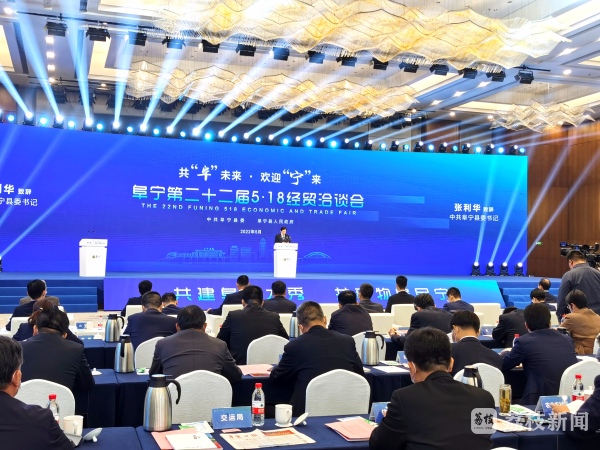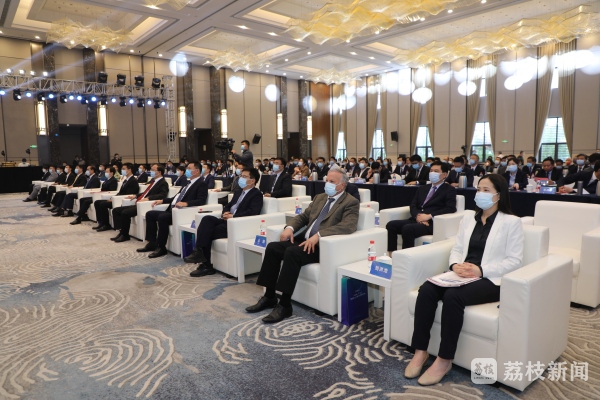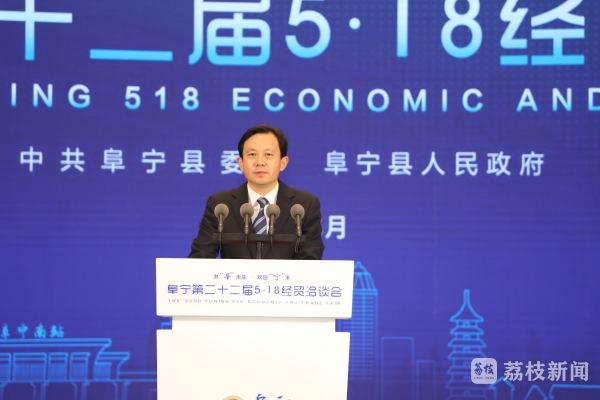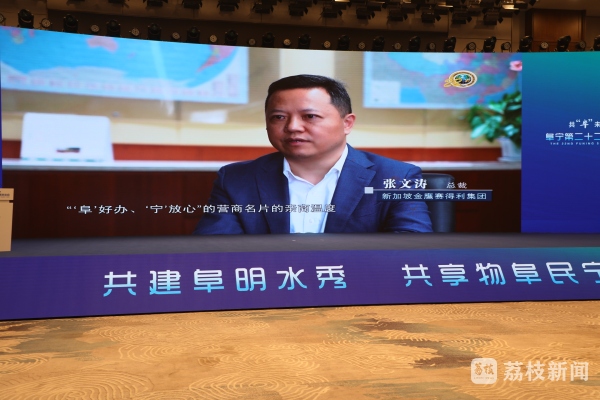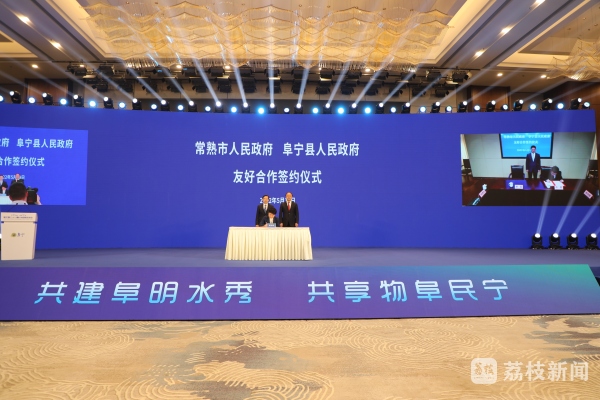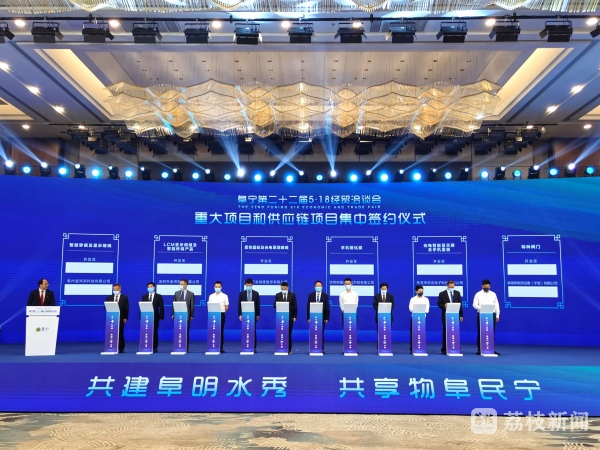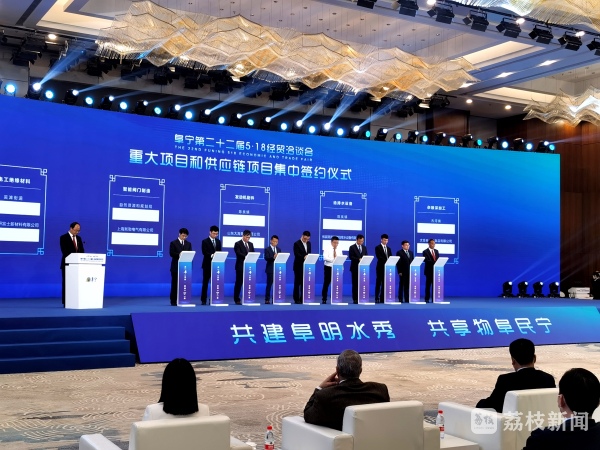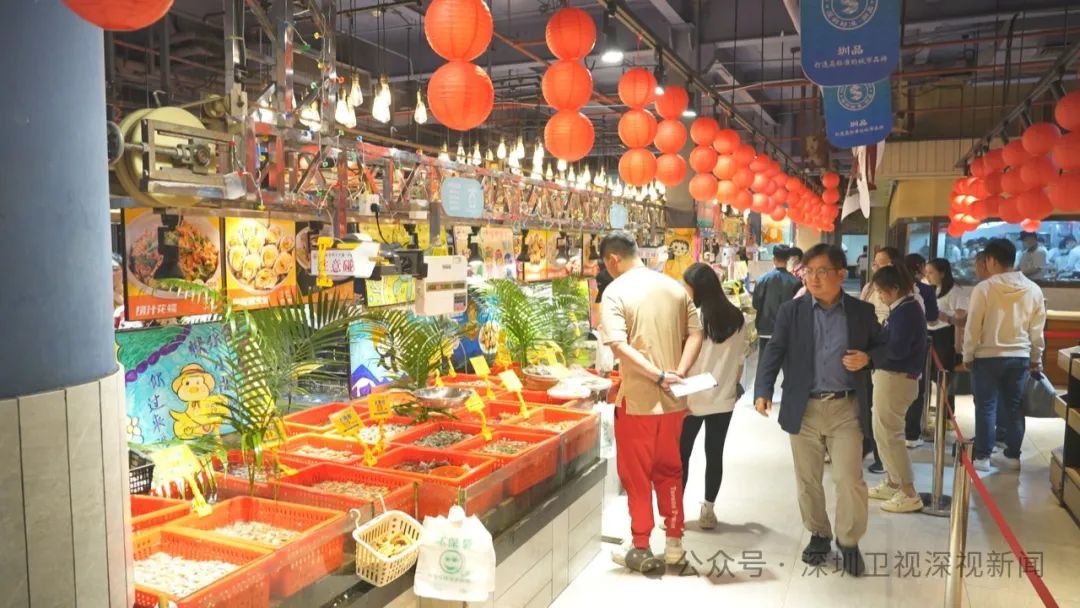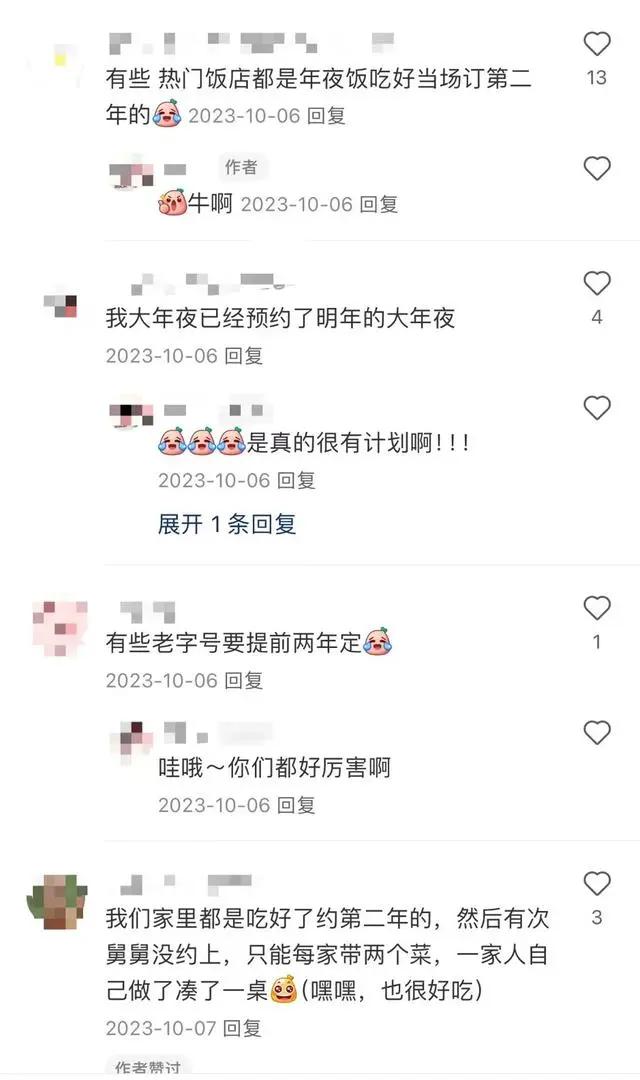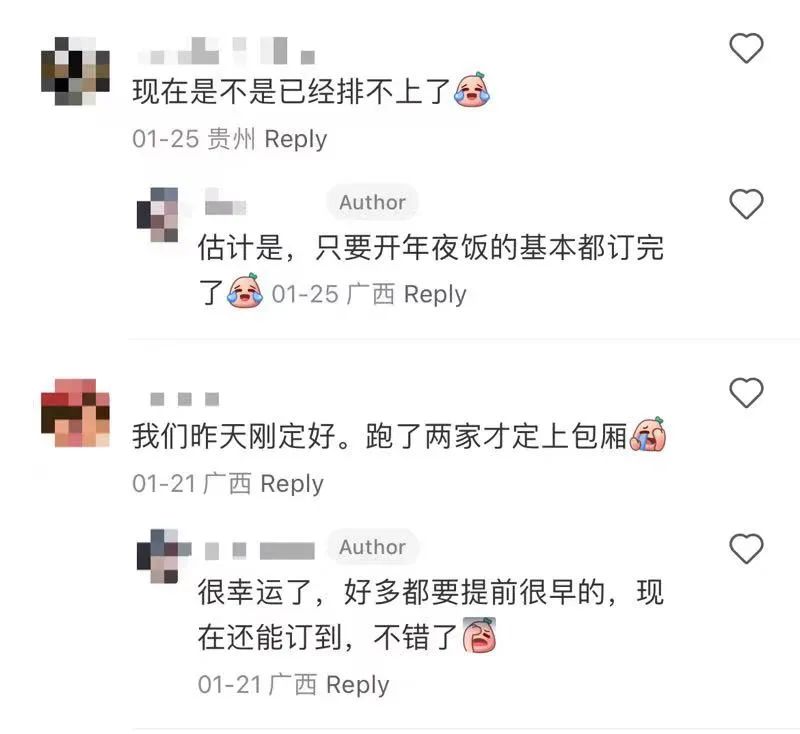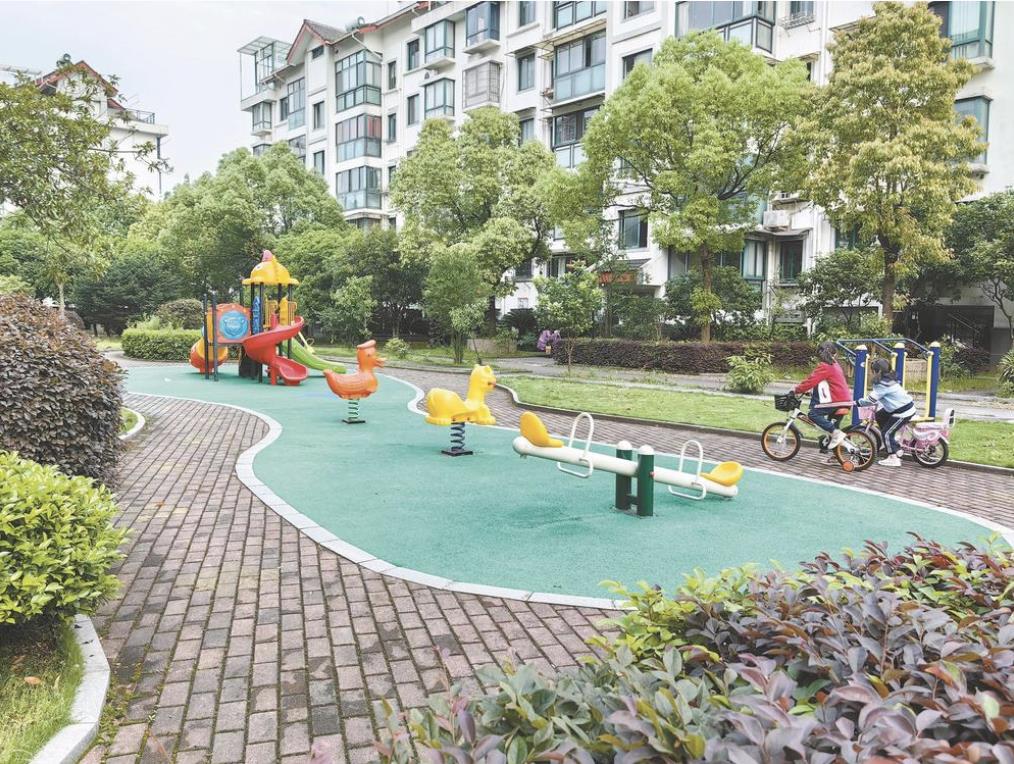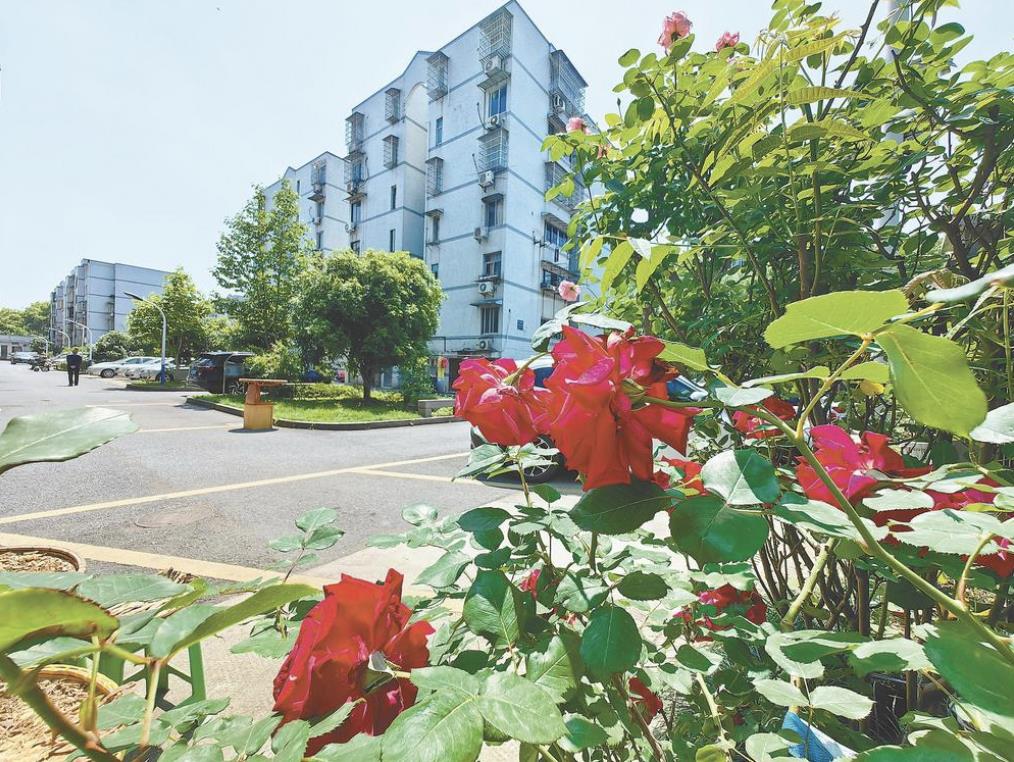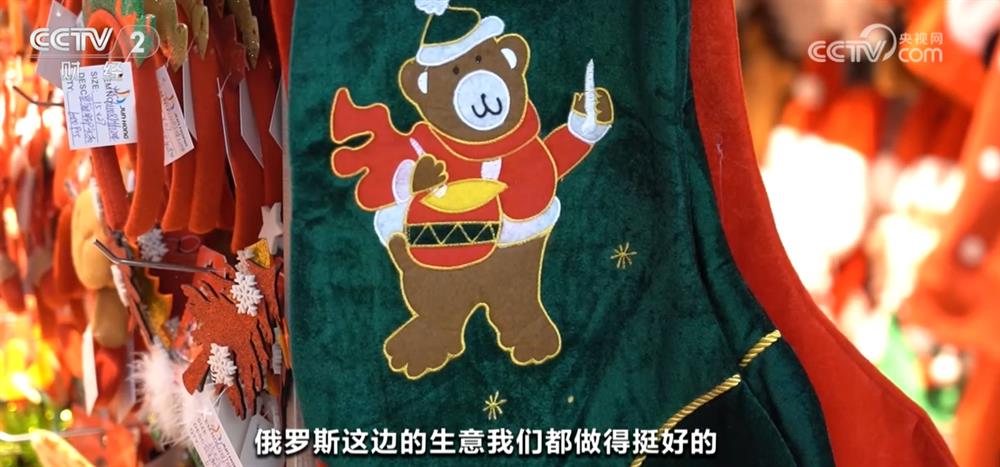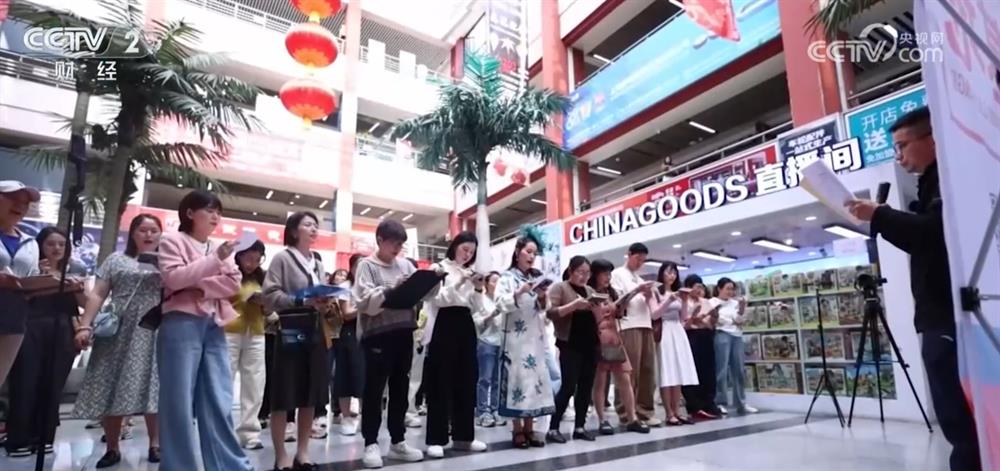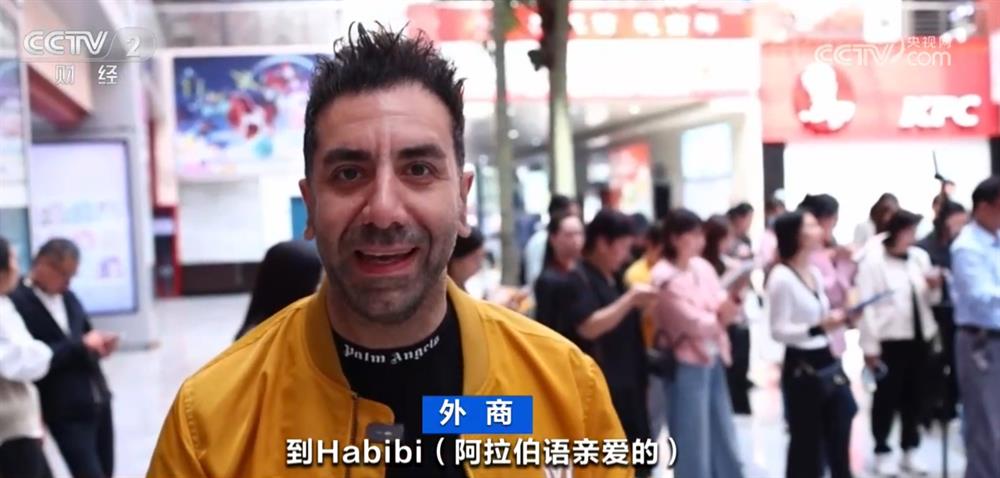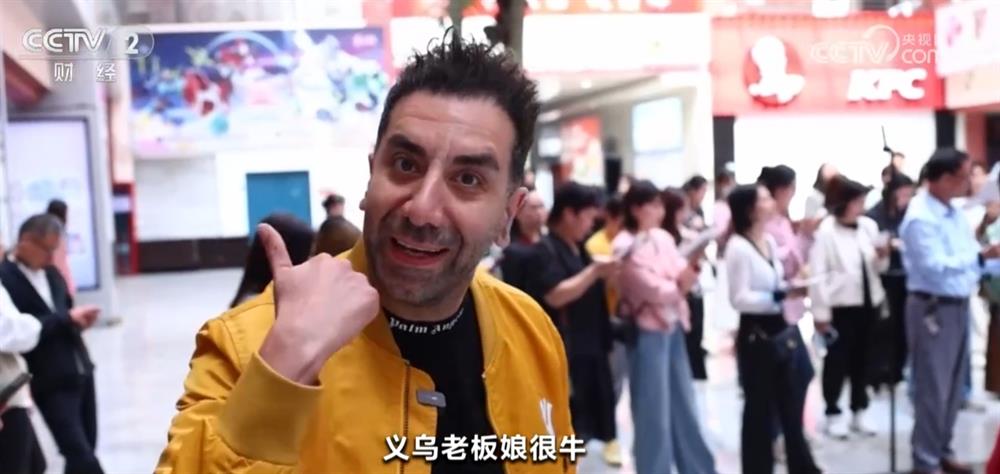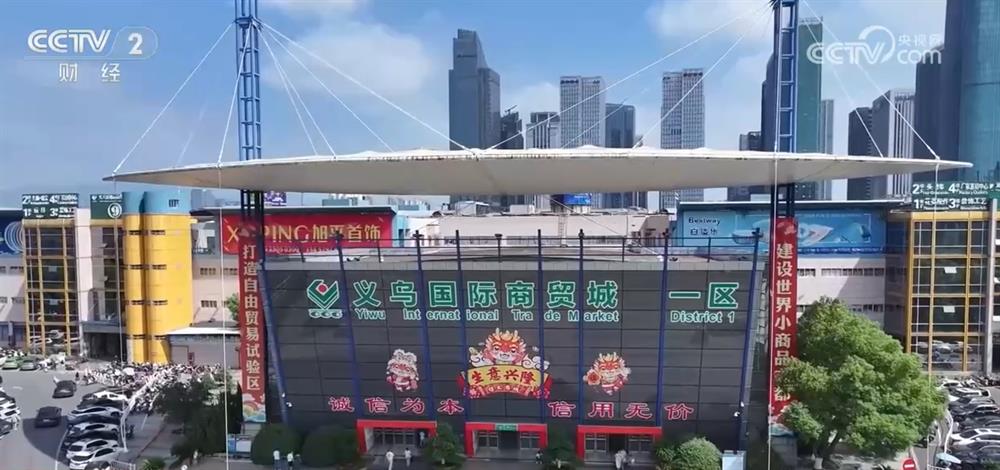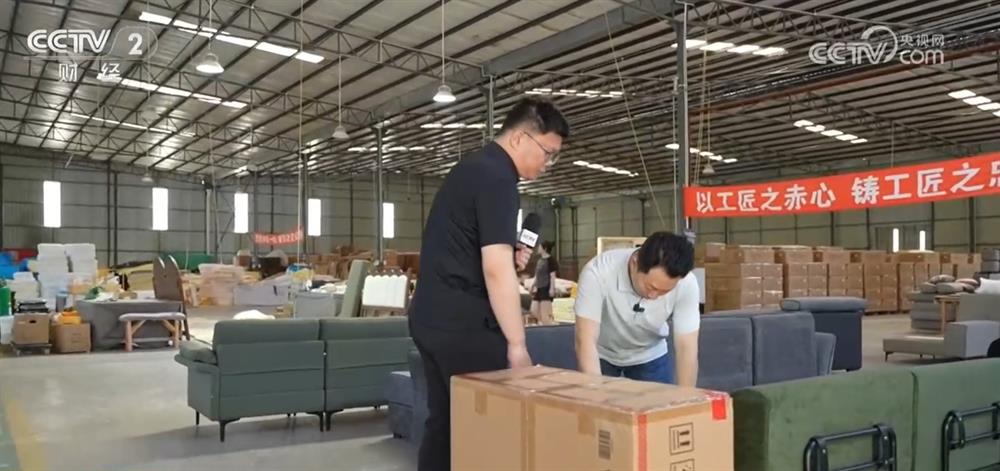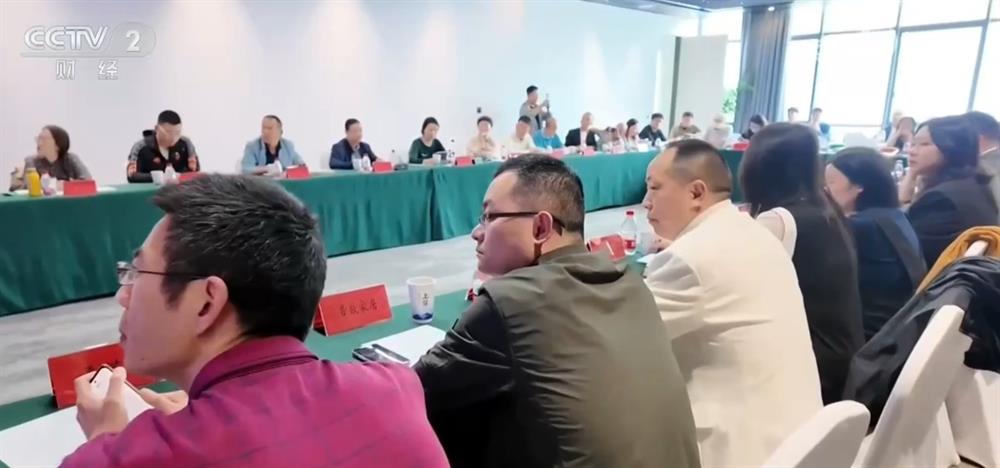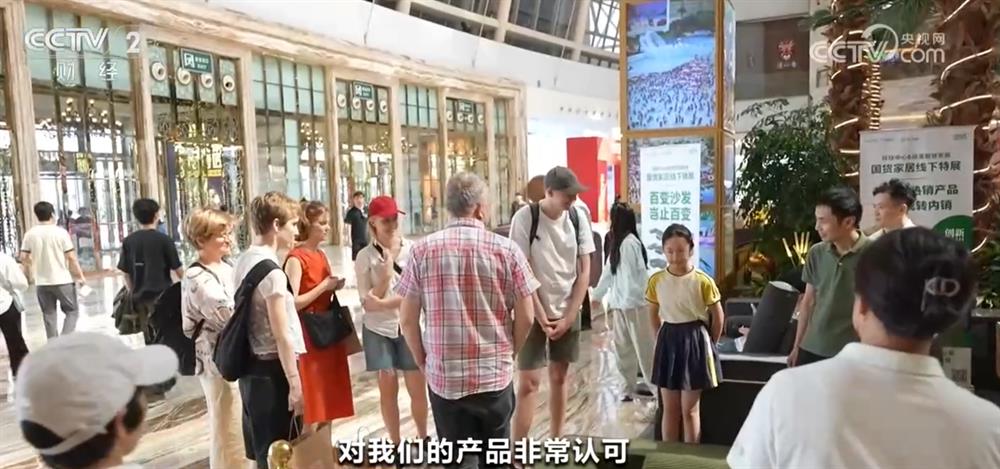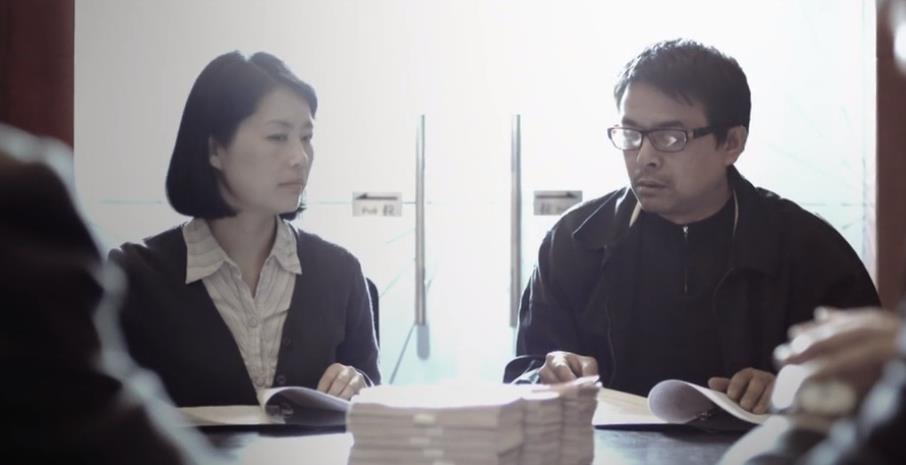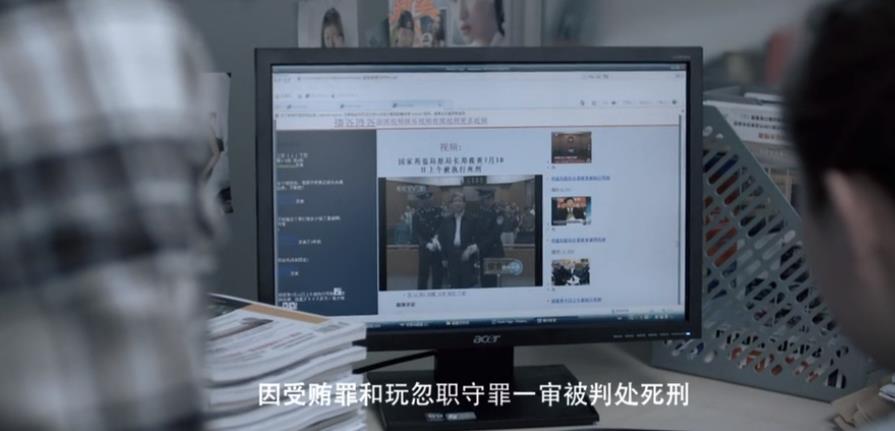() The business review of the Board of Directors in the first half of 2023 is as follows:
First, the overall operating situation analysis
In the first half of 2023, the Group conscientiously implemented various national decision-making arrangements and regulatory requirements, adhered to the market positioning of "serving agriculture, rural areas and farmers", serving small and medium-sized enterprises and serving the county economy ",practiced the strategy of" establishing retail businesses, prospering businesses through science and technology, and forcing talents ",deepened the development system of" integrated four-wheel drive "and made every effort to do a good job of" increasing income, preventing risks, optimizing structure and grasping transformation " The total assets were 1,438.351 billion yuan, up 86.490 billion yuan from the end of last year, the balance of deposits was 902.482 billion yuan, up 77.535 billion yuan from the end of last year, and the balance of loans was 673.736 billion yuan, up 41.059 billion yuan from the end of last year. The scale of assets, deposits and loans ranks first in Chongqing. The profit index grew steadily, achieving a net profit of 7.121 billion yuan, a year-on-year increase of 624 million yuan. The asset quality remained stable, and the non-performing loan ratio was 1.21%, down 0.01 percentage point from the end of last year. The provision coverage ratio is 350.87%, the capital adequacy ratio is 15.30%, and the core tier-one capital adequacy ratio is 12.86%, which has strong risk resistance. Ranked 115th in the list of "Top 1,000 Global Banks in 2023" published by Banker magazine, ranked 22nd among the listed banks in China, and ranked first among the national rural commercial banks and central and western banks.
The level of serving the real economy has been continuously improved. Actively meet major strategic opportunities, provide diversified services such as credit, bonds, investment banking, gold rent, wealth management, and support 141 major projects and municipal key projects in Chengdu-Chongqing area, with a credit amount of 108.421 billion yuan and a loan balance of 21.681 billion yuan. Focus on the construction of new land and sea channels in the west, and use special products such as land and sea new channel loans to support the financing balance of foreign trade enterprises along the line of 10.566 billion yuan. The "two increases and two controls" reached the standard in time, and the balance of inclusive small and micro loans was 125.211 billion yuan, an increase of 12.173 billion yuan over the end of last year. The county market continued to be deeply cultivated, and the balance of agricultural loans was 227.289 billion yuan, an increase of 11.664 billion yuan over the end of last year. Constantly enriching the green financial system, it has been included in the scope of financial institutions supporting carbon emission reduction by the People’s Bank of China, with a green credit balance of 57.642 billion yuan.
The effectiveness of digital transformation is constantly emerging. In-depth implementation of digital Chongqing construction and deployment, start digital transformation strategic planning consultation, actively introduce external data sources, and strengthen financial technology innovation and empowerment. Accelerate the layout of digital villages, build a rural revitalization financial service management platform, strengthen the application of special services such as "dialect bank" and "air counter", and make new highlights in government affairs and people’s livelihood services. Formulate R&D technical specifications, build an independent and controllable unified R&D platform, and the digital risk control system is becoming more and more complete. Iterative optimization of online products, integration to create a digital product system "Chongqing Quick Loan+",the balance of online loans was 145.598 billion yuan, and the number of mobile banking users exceeded 14 million, continuously improving service efficiency and customer experience.
Second, the financial review
(A) Analysis of income statement
In the first half of 2023, the Group achieved operating income of 14.866 billion yuan, a year-on-year decrease of 464 million yuan or 3.03%; The net profit was 7.121 billion yuan, an increase of 624 million yuan or 9.61%. After deducting non-recurring gains and losses, the net profit attributable to shareholders of the Bank was 6.799 billion yuan, an increase of 489 million yuan or 7.75%.
1. Net interest income
In the first half of 2023, the net interest income was 12.044 billion yuan, a year-on-year decrease of 747 million yuan or 5.84%. Among them, loan interest income accounted for 58.31% of interest income, up 0.88 percentage points year-on-year.
(1) Net interest margin and net interest rate of return
In the first half of 2023, the Group’s net profit margin was 1.70%, down 21 basis points year-on-year; The net interest rate of return was 1.79%, down 24 basis points year-on-year. From the asset side, on the one hand, LPR continues to be lowered, and the capital market interest rate is lower; On the other hand, the Group reduced fees and profits, effectively reduced the financing costs of enterprises, and the return on assets declined. From the debt side, the Group strengthened the control of deposit cost and effectively reduced the debt financing cost.
Net interest income decreased by 747 million yuan year-on-year, mainly due to the increase of 985 million yuan driven by the change of average balance of assets and liabilities, and the decrease of 1.731 billion yuan affected by the change of average yield and cost rate.
2. Non-interest net income
In the first half of 2023, the Group’s net non-interest income was 2.822 billion yuan, up by 283 million yuan or 11.16% year-on-year, accounting for 18.98% of its operating income, up by 2.42 percentage points year-on-year.
(1) Net fee and commission income
In the first half of 2023, the Group’s net fee and commission income was 992 million yuan, a year-on-year decrease of 47 million yuan or 4.49%. The net fee and commission income accounted for 6.68% of the operating income.
The commission for agency and entrusted business was RMB426 million, up RMB80 million year-on-year, mainly due to the Group’s better growth in product marketing, consignment insurance and other agency business.
Bank card fee income was RMB286 million, up RMB129 million year-on-year, mainly due to the growth of the Group’s merchant business.
The settlement and clearing fee income was 84 million yuan, up 15 million yuan year-on-year, mainly due to the increase in online channel payment fee income.
Other fees and commission income was 326 million yuan, a year-on-year decrease of 38 million yuan, mainly due to the decrease in the lending rate of market bonds.
(2) Other non-interest net income
In the first half of 2023, the Group realized other non-interest income of 1.830 billion yuan, an increase of 330 million yuan year-on-year, with an increase of 21.99%, mainly due to the increase in income from changes in fair value.
Investment income was 1.073 billion yuan, a year-on-year decrease of 206 million yuan, mainly due to the decrease in investment income of trading financial assets.
The net gain from changes in fair value was RMB430 million, up RMB421 million year-on-year, mainly due to the Group’s enhanced market research and rational allocation of trading assets.
The net exchange income was RMB 41 million, a year-on-year decrease of RMB 13 million, mainly due to the decrease in exchange gains and losses of foreign exchange-related businesses caused by exchange rate fluctuations.
The income from asset disposal was RMB 03 million, a year-on-year decrease of RMB 03 million, mainly due to the decrease in the income from the disposal of fixed assets.
Other income was 243 million yuan, an increase of 125 million yuan year-on-year, mainly due to the increase in incentive funds for enjoying the central bank’s policy of supporting small and micro loans.
The income from other businesses was RMB 40 million, an increase of RMB 05 million year-on-year, which remained basically stable.
3. Taxes and surcharges
Taxes and surcharges are mainly related to loans (interest income), securities transfer and income generated by other financial products and services.
In the first half of 2023, taxes and surcharges were 147 million yuan, an increase of 03 million yuan year-on-year, which remained basically stable.
4. Business and management fees
In the first half of 2023, the Group’s business and management fees amounted to 4.639 billion yuan, an increase of 483 million yuan or 11.63%.
The cost-income ratio was 31.20%, up 4.09 percentage points year-on-year.
(1) Staff cost
In the first half of 2023, the staff cost was 2.911 billion yuan, a year-on-year increase of 208 million yuan, mainly due to the increase in staff costs.
(2) Depreciation and amortization
In the first half of 2023, depreciation and amortization amounted to 387 million yuan, a year-on-year decrease of 07 million yuan, which remained basically stable.
(3) Other general and administrative expenses
In the first half of 2023, other general and administrative expenses were 1.34 billion yuan, an increase of 282 million yuan year-on-year, mainly due to the increase in business promotion fees related to business development.
5. Other business costs
In the first half of 2023, the cost of other businesses of the Group was RMB 21 million, an increase of RMB 04 million year-on-year, mainly due to the increase in the operating lease cost of the Group’s operating lease business.
6. Impairment loss
The impairment loss of loans and advances from customers decreased by RMB2.661 billion year-on-year, mainly due to the steady improvement of the Group’s asset quality, and at the same time, the collection and disposal of written-off assets were intensified. In the first half of the year, 1.525 billion yuan of loans written off in the previous period were recovered, which led to the write-back of impairment reserves, so the credit impairment loss in the current period decreased significantly year-on-year. The impairment loss of financial investment increased by RMB694 million year-on-year, and other impairment losses increased by RMB192 million year-on-year, mainly because the Group made forward-looking provision for impairment based on the principle of prudence.
7. Net non-operating income and expenditure
In the first half of 2023, the Group’s net non-operating income and expenditure was RMB 04 million, mainly due to the decrease of the Group’s public welfare donation expenditure.
8. Income tax expenses
In the first half of 2023, the income tax expense was 1.097 billion yuan, a year-on-year increase of 231 million yuan. The actual income tax rate was 13.35%, which was lower than the statutory tax rate of 25%, mainly because the Group continued to optimize its business investment structure on the basis of balancing risks and benefits, and held some statutory tax-free government bonds and local government bonds, thus reducing the actual income tax rate.
(B) Balance sheet analysis
1. Assets
By the end of June 2023, the Group’s total assets were 1,438.351 billion yuan, an increase of 86.490 billion yuan or 6.40% compared with the end of last year.
The book balance of customer loans and advances was 673.736 billion yuan, an increase of 41.059 billion yuan or 6.49% compared with the end of last year. It accounted for 46.84% of the total assets, up 0.04 percentage points from the end of last year. Focusing on the strategic orientation of "establishing a retail bank", the Group increased the credit supply of consumer loans. Help rural revitalization and deepen the practice of inclusive finance. Serve major strategies such as the twin-city economic circle in Chengdu and Chongqing, build a green financial system, and increase support for advanced manufacturing and people’s livelihood.
Financial investment was 614.143 billion yuan, an increase of 41.160 billion yuan or 7.18% compared with the end of last year. The Group continued to increase investment in standardized products, at the same time, continuously enriched the variety of investable products and continuously optimized the allocation strategy. Trading financial assets amounted to 104.147 billion yuan, an increase of 38.311 billion yuan or 58.19% compared with the end of last year, mainly due to the increase in interbank deposit receipt investment. Debt investment was 376.326 billion yuan, a decrease of 24.816 billion yuan or 6.19% compared with the end of last year. Investment in other creditor’s rights was 132.517 billion yuan, an increase of 27.144 billion yuan or 25.76% compared with the end of last year. Investment in other equity instruments was RMB1.154 billion, an increase of RMB521 million or 82.41% compared with the end of last year, mainly due to the increase in investment in other equity instruments received by the Group.
The total amount of cash and deposits with the central bank was 56.968 billion yuan, an increase of 4.074 billion yuan or 7.70% compared with the end of last year, mainly due to the large growth of the Group’s deposits and the corresponding increase in the reserves deposited with the central bank.
The amount of interbank deposits and loans was RMB100.873 billion, an increase of RMB6.206 billion or 6.56% compared with the end of last year, mainly due to the Group’s increased scale of interbank deposits and loans.
Financial assets bought and resold amounted to RMB2.537 billion, a decrease of RMB5.920 billion or 70.00% compared with the end of last year, mainly because the Group reduced the scale of financial assets bought and resold in consideration of liquidity management needs.
(1) Customer loans and advances
As of the end of June 2023, the book balance of the Group’s customer loans and advances was RMB673.736 billion, an increase of RMB41.059 billion or 6.49% compared with the end of last year.
The company’s loans and advances totaled 326.383 billion yuan, an increase of 27.696 billion yuan or 9.27% compared with the end of last year. Among them, short-term loans increased by 635 million yuan and medium-and long-term loans increased by 27.061 billion yuan. The Group helped rural revitalization and increased support in rural tourism, grain industry chain and other fields; Optimize the credit scheme, promote the construction of green finance, and increase the credit supply of emerging industries such as new energy and advanced materials.
Retail loans and advances totaled 295.107 billion yuan, an increase of 12.337 billion yuan or 4.36% over the end of last year. The Group continued to vigorously develop the retail loan business of inclusive finance and consumer finance.
Among them, the total amount of personal mortgage loans was 94.847 billion yuan, a decrease of 2.119 billion yuan or 2.18% from the end of last year.
On the premise of meeting the regulatory requirements, the Group focuses on supporting the reasonable financing needs of residents’ self-occupied houses.
The loans for individual business and re-employment totaled 112.384 billion yuan, an increase of 10.504 billion yuan or 10.31% compared with the end of last year. The Group built a one-stop online financing platform, integrated the advantages of offline channels, boosted the development of personal loan business, and continuously enhanced the advantages of inclusive finance.
Other loans totaled 87.876 billion yuan, an increase of 3.952 billion yuan or 4.71% over the end of last year. The Group optimized its marketing model, improved product adaptability and promoted the development of consumer finance.
The discounted bills were 52.246 billion yuan, an increase of 1.026 billion yuan or 2.00% over the end of last year. The Group increased its support for the short-term financing needs of enterprises.
In the first half of 2023, the Group closely followed the major national and local strategic plans, and made great efforts to serve local economic development and help infrastructure construction projects. By the end of June, 2023, the loan balances of the top three corporate loans of the Group (namely, leasing and business services, water conservancy, environment and public facilities management and manufacturing) were 82.685 billion yuan, 76.465 billion yuan and 64.432 billion yuan respectively, accounting for 12.27%, 11.35% and 9.56% of the total loans and advances of the Group respectively.
(2) Financial investment
By the end of June 2023, the total financial investment was 614.143 billion yuan, an increase of 41.160 billion yuan or 7.18% compared with the end of last year. The Group continued to strengthen market research and actively optimized its investment structure according to market changes.
In the first half of 2023, the Group continued to optimize its financial investment structure, with a total bond investment of 484.295 billion yuan, an increase of 15.606 billion yuan or 3.33% compared with the end of last year.
Step 2 Liabilities
By the end of June 2023, the Group’s total liabilities amounted to RMB1,318.618 billion, an increase of RMB81.773 billion or 6.61% over the end of last year. Customer deposits are the core source of liabilities of the Group, with an increase of 77.535 billion yuan or 9.40% compared with the end of last year; Inter-bank deposits and loans increased by 9.533 billion yuan or 10.19% compared with the end of last year; Issued debt securities decreased by 25.763 billion yuan or 15.06% compared with the end of last year; The amount of financial assets sold and repurchased increased by 11.526 billion yuan, or 27.14%, compared with the end of last year, mainly because the Group adjusted its debt structure according to market conditions; Borrowing from the central bank increased by 7.354 billion yuan, or 8.51%, compared with the end of last year, mainly by actively using the central bank’s monetary instruments and increasing the central bank’s special funds such as supporting agriculture and supporting small loans.
(1) Customer deposits
In the first half of 2023, the Group relied on its channel and retail advantages, and its customer deposits grew steadily. By the end of June 2023, the total customer deposits were 902.482 billion yuan, an increase of 77.535 billion yuan or 9.40% over the end of last year.
From the perspective of customer structure, the company’s deposits were 151.318 billion yuan, an increase of 10.236 billion yuan or 7.26% compared with the end of last year; Personal deposits amounted to 741.462 billion yuan, an increase of 64.111 billion yuan or 9.46% compared with the end of last year, and its proportion in total customer deposits further increased by 0.05 percentage point compared with the end of last year.
From the perspective of term structure, demand deposits were 235.927 billion yuan, a decrease of 14.824 billion yuan or 5.91% compared with the end of last year, accounting for 26.14% of the total customer deposits; Time deposits amounted to 656.853 billion yuan, an increase of 89.171 billion yuan or 15.71% compared with the end of last year, accounting for 72.79% of the total customer deposits.
4. Off-balance sheet items
By the end of June 2023, the off-balance sheet items of the Group mainly included unused credit card lines, acceptance bills, letters of guarantee and letters of credit, with balances of 26.381 billion yuan, 13.059 billion yuan, 1.498 billion yuan and 2.676 billion yuan respectively; The capital expenditure commitments that have been approved but not yet shown on the balance sheet are all approved contracts that have not been signed or fulfilled, amounting to 505 million yuan; Operating lease commitments not included in the measurement of lease liabilities are not significant.
(C) Analysis of cash flow statement
The net cash inflow from operating activities was 20.041 billion yuan. Among them, the cash inflow was 127.686 billion yuan, an increase of 7.764 billion yuan year-on-year, mainly due to the net increase in customer deposits and interbank deposits; The cash outflow was 107.644 billion yuan, a year-on-year increase of 52.215 billion yuan, mainly due to the year-on-year increase in the net increase in financial assets held for trading purposes.
The net cash inflow from investment activities was 6.697 billion yuan. Among them, the cash inflow was 172.348 billion yuan, an increase of 22.682 billion yuan year-on-year, mainly due to the increase in cash received from investment recovery; The cash outflow was 165.651 billion yuan, an increase of 6.842 billion yuan year-on-year, mainly due to the increase in cash paid for investment.
The net cash outflow from fund-raising activities was 30.858 billion yuan. Among them, the cash inflow was RMB113.627 billion, up RMB5.941 billion year-on-year, mainly due to the increase in cash received by the Group in issuing bonds; The cash outflow was 144.486 billion yuan, a year-on-year decrease of 16.673 billion yuan, mainly due to the decrease in cash paid to repay bonds.
(D) Analysis of loan quality
1. Five-level classification of loans
In the first half of 2023, the Group adhered to the bottom line thinking, strictly controlled substantive risks, implemented dynamic classified management, timely collected and disposed non-performing assets, and comprehensively consolidated asset quality. By the end of June, 2023, the balance of non-performing loans of the Group was 8.144 billion yuan, an increase of 427 million yuan compared with the end of last year; The non-performing loan ratio was 1.21%, down 0.01 percentage point from the end of last year, of which the balance of non-performing loans in the main city accounted for 54.70% and that in the county accounted for 45.30%.
2. Loan concentration
(1) Industry concentration and distribution of non-performing loans
In the first half of 2023, the Group fully studied the regulatory policies, strictly implemented the credit investment guidelines, strictly controlled the credit access, and strengthened the monitoring of customers in key areas and key industries. With the gradual economic recovery in the first half of 2023, the balance and non-performing rate of corporate non-performing loans of the Group continued to show a "double decline" trend, and the asset quality continued to improve; The balance of retail non-performing loans has increased, mainly because the operating income of some individual industrial and commercial households and other customers has not been effectively restored, and the solvency is insufficient. The Group classified management according to material risks, and the growth rate of retail non-performing loans decreased year-on-year, and the asset quality remained stable.
(2) borrower concentration
At the end of June 2023, the total loans of the largest single borrower of the Group accounted for 3.83% of the net capital, and the total loans of the top ten customers accounted for 23.28% of the net capital. By the end of June 2023, the loans of the top ten single borrowers of the Group were all non-performing loans.
Third, the main business discussion and analysis
(1) Retail business
Adhering to the development concept of "customer-centered", the Bank strengthened product innovation, built a customer value-added rights and interests system and enriched customer rights and interests around "customer acquisition and drainage, customer viscosity, and excellent customer efficiency". Efforts will be made to promote the promotion of merchant business, optimize the card environment, and accelerate the construction of the BBC financial ecosystem. Maintain the determination of transformation and upgrading, further deepen the retail market, and steadily push the retail business to a new level.
1. Personal deposit and loan business
The increase in personal deposits has reached a new high. We will continue to build a classified management system of "functional, characteristic and scene-based" products, optimize the deposit structure, tap the deposit potential and contribution of key customer groups, create characteristic deposit products and activities, enhance the sense of customer exclusivity, and inject strong momentum into precision marketing. By the end of June 2023, the balance of personal deposits of the Group was 741.462 billion yuan, an increase of 64.111 billion yuan or 9.46% compared with the end of last year, and the total amount of personal deposits and incremental market share remained the first in Chongqing.
The scale of consumer loans has steadily increased. Focusing on the strategic orientation of "establishing a retail bank", we continued to increase retail credit. The balance of retail consumer loans (excluding mortgages and third-party joint loans) was 36.205 billion yuan, a net increase of 5.804 billion yuan compared with the end of last year, ranking first in the city in terms of balance and increment. We launched "Chongqing Express Loan and New Citizen Lease Loan", and the acceptance of "transfer with mortgage" business ranked first in the city, which led to an increase of 1.263 billion yuan in mortgage investment year-on-year. By the end of June, 2023, the loan balance of "billion-level" fist product "Chongqing Express Loan" reached a new high, reaching 16.596 billion yuan, an increase of 5.466 billion yuan compared with the end of last year and an increase of 2.910 billion yuan year-on-year, keeping the balance and increment of similar products first in the city.
2. Bank card business
Debit card business continues to grow. Constantly improve the "Jiangyu" branded debit card product system and continuously improve product functions. By the end of June 2023, the total number of debit cards issued by the Group reached 28,648,900. Among them, there were 12,836,800 rural debit cards with the function of subsidizing remittance fees from different places, and the remittance funds from different places were 31.638 billion yuan that year. The social security card business grew rapidly, with the cumulative social security card issuance exceeding 6 million, and 1,257,900 new cards were issued in the first half of the year, ranking first in the city in terms of card issuance increment.
The credit card business has developed steadily. Vigorously develop installment business, strengthen the construction of merchant scenes, constantly consolidate internal management, effectively control development risks, and maintain rapid growth of credit card business. By the end of June 2023, there were 81,400 new credit card customers, and the credit balance increased by 1.249 billion yuan or 10.06% compared with the end of last year. The transaction amount of merchants was 97.698 billion yuan, up 30.63% year-on-year, and the balance of merchants’ AUM was 68.170 billion yuan, up 16.42% from the end of last year. The LUM balance of merchants was 42.912 billion yuan, an increase of 9.44% over the end of last year.
3. Wealth management business
The quality and efficiency of wealth management business have improved. Strict access standards, optimizing cooperative institutions around the customer’s characteristic rights and interests system; Intensified guest
By the end of June 2023, the sales of agency insurance products reached 1.335 billion yuan, up 21.14% year-on-year, and the commission income of insurance agency business reached 159 million yuan, up 74.73% year-on-year.
4. Customer management
Build a precise marketing service system. Using digital technology to promote the deep mining, labeling management and value re-promotion of customer data, and basically build a multi-dimensional customer labeling system of "subject, behavior and contribution", laying a good foundation for realizing "creating products for customers and finding customers for products". By the end of June 2023, there were nearly 29 million retail customers and 15,370,600 active customers, an increase of 361,100. The number of VIP customers increased by 170,400, with an increase of 6.33%, and the balance of financial assets of VIP customers increased by 50.900 billion yuan, with an increase of 8.48%, realizing the "double increase" of target customers and customers’ contributions.
5. Electronic distribution channels
Promote intelligent and digital marketing. Vigorously expand outbound marketing business and focus on improving service quality and efficiency. During the reporting period, the customer service volume of telephone banking was 3,502,900 tons, and the customer satisfaction rate was 99.21%. Robot intelligent outbound calls were 1,709,100 times, accounting for 90.70% of the total outbound calls; The output value of loan marketing was 635 million yuan, a year-on-year increase of 153.78%.
Transformation and upgrading of mobile banking. Continue to carry out aging transformation, enrich the non-financial functions of helping agriculture, expand the application scenarios of interactive platforms, and improve online payment and financial interactive services. By the end of June 2023, the Group had 14,037,300 mobile banking users, a net increase of 512,500 or 3.79% compared with the end of last year. This year, the transaction amount was 762.624 billion yuan, and there were 44,877,500 financial transactions, with a year-on-year increase of 7.05%.
Transformation and development of corporate online banking. Continue to optimize and upgrade the corporate online banking 4.0 system, and complete the online functions such as loan collection, APP cloud signing, and wealth management signing management to help the company’s financial digital transformation and development. By the end of June, 2023, there were 154,400 corporate online banking customers, with a net increase of 6,500, or 4.24%, compared with the end of last year. The transaction amount in this year was 626.372 billion yuan, and 6,035,000 financial transactions occurred, up by 11.66% year-on-year.
(2) Small and micro businesses
The Bank adhered to the main business of serving the real economy, followed the pace of Chongqing’s economic and social development, seized policy opportunities, further promoted digital transformation and upgrading, and continued to promote the high-quality development of small and micro businesses. By the end of June, 2023, the Bank had 193,100 inclusive loans to small and micro enterprises, an increase of 17,100 compared with the end of last year. The loan balance was 125.211 billion yuan, an increase of 12.173 billion yuan compared with the end of last year, and the growth rate was 4.80 percentage points higher than the growth rate of various loans of the Bank, thus achieving the goal of "two increases". The loan increment and stock of Pratt & Whitney small and micro enterprises continued to rank first in the city, winning the title of "Advanced Unit of Financial Services for Small and Micro Enterprises in 2022", and the supervision and evaluation of financial services for small and micro enterprises continued to maintain the highest level.
Broaden the channels for obtaining customers. Relying on big data, cloud computing, artificial intelligence technology, and taking electronic channels such as micro-banking and mobile banking as carriers, we will build an intelligent working platform for integrated financing services, providing small and micro enterprises and individual industrial and commercial households with one-stop financing services of "scanning code application, product matching, automatic billing and intelligent loan handling" and opening up online customer acquisition channels; Give full play to the advantages of the Bank in many aspects, and further promote the "global marketing of all employees" to help microfinance services reach deeper and cover wider.
Deepen transformation and upgrading. Adhere to the market demand and customer experience as the guide, further promote digital transformation, and create differentiated competitive advantages. In terms of products, we will continue to deepen the multi-party cooperation between the government and banks, build a batch business incubation platform, promote system interconnection and data sharing, and newly launch businesses such as "Qingfeng Loan", "Chongqing Fast Mining Loan" and "Commercial Value Credit Loan", and diversify the customer base through multi-dimensional products. In terms of process, we strengthened technology empowerment, launched mobile survey and image acquisition tools, optimized the functions of "cloud signing", "self-service lending" and "self-service loan renewal", continued to promote the online and intelligent transformation of the loan process, and improved the convenience and experience of micro-financing. In the first half of 2023, small and micro businesses lent over 60 billion yuan through online channels, an increase of over 15 billion yuan year-on-year.
Deepen the market of individual industrial and commercial households. Focus on the characteristics of individual industrial and commercial households, create a platform of "Chongqing Express Revitalization Loan", establish a differentiated model, and create a series of exclusive products such as "Chongqing Express Catering Loan", "Chongqing Express Business Super Loan" and "Chongqing Express Merchant Loan" to enhance product adaptability; Go deep into the concentrated areas of individual industrial and commercial households to carry out policy announcements and visits, strengthen the docking of financing needs, and increase credit supply through intelligent loan channels. By the end of June 2023, loans to individual industrial and commercial households had increased by 16,800 households and 10.583 billion yuan compared with the end of last year.
(III) Business of the Company
Focusing on key areas such as the twin-city economic circle in Chengdu-Chongqing region, the new land and sea corridor in the west, and the construction of key municipal projects in Chongqing, the Bank actively carried out the construction of a green financial system, focused on advanced manufacturing, helped the real economy to become better and stronger, continuously increased its support for rural revitalization, water and electricity supply and other areas that benefit people’s livelihood, gradually improved its international settlement and cross-border service capabilities, and steadily promoted the high-quality development of the company’s business.
1. The company’s deposit and loan business
By the end of June 2023, the balance of deposits of the Group’s companies was RMB151.318 billion, an increase of RMB10.236 billion over the end of last year; The company’s loan balance was 326.383 billion yuan, an increase of 27.696 billion yuan over the end of last year.
Strengthen financial support and serve major strategies. Focusing on the twin-city economic circle in Chengdu-Chongqing area, the new land and sea passage in the west and the key projects at the municipal level, we will establish a joint marketing mechanism between the general branch and the branch in accordance with the requirements of "project, inventory and responsibility", implement the classified management of the list, and enhance the service for major strategic projects. By the end of June 2023, Chongqing’s major projects in 2023 had been fully covered and docked, and 141 major projects in Chengdu-Chongqing Shuangcheng Economic Circle and municipal key projects were supported. The approved credit amount was 108.421 billion yuan, and the loan balance was 21.681 billion yuan.
Implement three "optimizations" to support advanced manufacturing. Optimize industry investment and promote credit resources to tilt towards Chongqing’s "33618" modern manufacturing cluster system industry. Optimize the customer structure and increase the marketing efforts of "specialized and innovative" enterprises. The proportion of financial services in Chongqing specialized and innovative enterprises reached 67.35%. Optimize the credit plan, focusing on promoting the implementation of the "excellent customer promotion plan" for manufacturing enterprises. The total amount of new manufacturing loans accounted for nearly 30% of the total amount of accumulated corporate loans in the first half of the year.
Increase investment in agriculture-related loans to help rural revitalization. Landing the first affordable rental housing project of the whole bank. Promote the integration of agriculture and tourism, further improve the financial services of rural tourism resources, and focus on supporting related projects in rural revitalization demonstration zones. Ensure food security, increase financial support for the grain industry chain, and increase investment in agriculture-related loans to key grain and oil enterprises.
Make good use of policy tools to promote green development. The Bank actively participated in the construction of Chongqing Green Finance Reform and Innovation Experimental Zone. Since 2023, the Bank has been included in the scope of financial institutions supporting carbon emission reduction by the Head Office of the People’s Bank of China, successfully launched the first green bill discount business in the Bank, and received special support from the People’s Bank of China for "Green Ticket Pass" rediscount. By the end of June 2023, the balance of green credit was 57.642 billion yuan, an increase of 8.927 billion yuan or 18.32% over the end of last year.
Scientifically plan transformation and optimize marketing scenarios. Formulate the standard of financing data system, realize the online management of FPA financing total index of corporate customers, and lay the foundation for coordinating the development of total assets business; Further optimize the efficiency of service tools, complete the transformation of online credit application system, and improve credit efficiency; Further optimize the customer structure of the company and promote the effective expansion of key customer groups such as VIP, comprehensive, full-product and active customers; The customer acquisition capacity of the scene was further optimized, the retail lines were linked, and the standardized process of scene marketing was established, achieving 6,628 corporate customers and 810,000 individual customers, with a cumulative payment of over 6.7 billion yuan.
2. Institutional business
Broaden business channels and promote the return of funds. Actively participated in the bidding for cash management of the central treasury, and won the bid for 3 times in total, bringing in 15 billion yuan of foreign funds for Chongqing; Adjust the target customer base, take the initiative to attack and actively market, and make every effort to maintain stability.
The account and deposit marketing of body economic organizations, and the account opening of rural economic organizations accounted for 70.50% of the city.
3. International business
In the first half of 2023, the Bank achieved international settlement volume of US$ 2.35 billion, and settlement and sale of foreign exchange on behalf of customers amounted to US$ 730 million. The transaction volume of foreign exchange funds ranks first among local corporate banks in Chongqing, including inter-bank spot foreign exchange transactions of US$ 2.653 billion and inter-bank far swap settlement and sale transactions of US$ 3.281 billion.
Achieve new breakthroughs in cross-border financing. Innovate the green financial service model and land the first cross-border carbon emission quota pledge financing business in the city. We implemented the facilitation policy of cross-border financing for financial foreign exchange service enterprises, continued to promote the incremental expansion of cross-border loans for science and technology, and provided cross-border financing for five science and technology enterprises with a cumulative amount of 8.28 million US dollars.
Construct dual channels of international settlement. It is the first local corporate bank to directly connect CIPS standard transceiver with API mode to realize the automation, digitization and paperless of cross-border RMB settlement messages, and form a dual-channel settlement system of SWIFT and CIPS.
Help the construction of new land and sea passages in the west. We continued to use financing products such as "land and sea new channel loan" to provide financing support for channel enterprises, and issued a total of 11.4 million yuan of "land and sea new channel loan" for four manufacturing small and micro enterprises. Continue to promote the expansion and increment of "land-sea chain integration", and use the "one-single-system" digital bill of lading of the new land-sea channel and the information interaction function between banks to issue financing of 12,465,000 US dollars.
(4) Financial market business
1. Financial interbank business
During the reporting period, the Bank steadily enhanced its market influence and expanded its brand awareness: it was re-elected as the first-class dealer in open market business in 2023, and it was the only legal entity in Chongqing that was granted the qualification; In the evaluation of the inter-bank local currency market, it has been awarded the honorary award of monthly innovative active traders for many times. In terms of asset-liability allocation, we should give consideration to liquidity and profitability on the premise of ensuring safety, reasonably arrange the speed of opening positions according to the trend of interest rates, make a good multi-level asset portfolio, make good use of the policy advantages of various business varieties, continuously optimize the account book allocation strategy, and explore investment opportunities in different markets; Improve the utilization efficiency of debt resource indicators, step on the rhythm of debt absorption, optimize debt maturity and product portfolio management, and broaden financing channels; Continuously improve the diversification of customer types and continuously reduce the cost of debt. In terms of trading, we will continue to improve research methods and research systems, build professional investment and research teams, focus on fundamentals, policies and technologies, enhance the forward-looking and autonomy of investment and research analysis, select appropriate trading strategies, continuously enrich trading varieties, and continuously increase asset returns.
By the end of June 2023, the balance of the Group’s bond investment was 484.295 billion yuan, including 340.744 billion yuan of government bonds, public institutions and quasi-government bonds, an increase of 13.349 billion yuan compared with the end of last year. The scale of other bonds increased slightly as a whole, including 102.186 billion yuan of AAA1-rated bonds, an increase of 3.720 billion yuan compared with the end of last year, and 2.7 billion yuan of AA+-rated bonds among other bonds.
By the end of June 2023, the book value of the Group’s financial institution bonds was 219.366 billion yuan, including 129.948 billion yuan of policy bank bonds, 54.463 billion yuan of asset securitization products, 32.731 billion yuan of commercial bank bonds and 2.225 billion yuan of bonds issued by other financial institutions.
2. Asset management business
Based on the group’s position, the financial subsidiary devotes itself to serving the national strategy, adhering to the development concept of "keeping integrity, innovating and striving for Excellence", constantly forging core competitiveness, actively responding to market changes and promoting steady development.
Focusing on the three product systems of "Heng, Yi and Xing", the product attributes are dynamically monitored to reach the standard, and a "3+5+N" product matrix is formed, which can more effectively identify customers’ risk preferences and accurately match customers’ investment needs. We will continue to improve the driving mechanism of investment and research, build an investment and research system covering macro, industry, strategy, assets and other multi-dimensional perspectives, implement dividend strategy, create a mixed fixed income and special account for stocks and bonds, deeply participate in the investment of REITs assets, and actively explore the allocation of equity assets on the basis of building a risk bottom line, and drive development with innovation. Strengthen the empowerment of science and technology, build a framework system centered on the three core systems of "asset management system, distribution system and valuation system" and cover 14 types of systems, and innovatively launch a direct selling system to provide customers with more convenient financial services.
3. Investment banking business
Lead underwriting of 11 debt financing instruments for non-financial enterprises, with a total underwriting share of 4.552 billion yuan; The total amount of bonds underwritten by the participating delegations was 69.542 billion yuan; Successfully completed the issuance of the Bank’s 2 billion yuan special financial bonds for agriculture, rural areas and farmers.
4. Asset custody business
In the first half of 2023, the Bank’s asset custody business closely followed the direction of digital transformation, increased investment in system technology, and helped the custody business develop steadily.
(5) Financial technology
Give full play to the effectiveness of organizational structure and promote the overall management of financial technology. Continue to give full play to the effectiveness of the Bank’s "one meeting, one center and one department" 1 financial science and technology organizational structure, give priority to ensuring the talent allocation and resource supply of science and technology lines, maintain steady growth in science and technology investment in the first half of 2023, continue to develop towards the goal of "digital rural commercial bank", and complete 46 project approval projects; A one-stop business demand review meeting mechanism was established, and more than ten online self-operated products were launched, serving over 10 million customers. By the end of June 2023, there were 533 financial science and technology personnel in the Bank, accounting for 3.69%, including 5 doctors, forming an echelon of talents with independent and controllable financial capabilities.
Consolidate the foundation of data center and expand the ability of data value discovery. Promote the application of regulatory data, and develop a one-stop enterprise information fusion query tool. The external data service interfaces have visited more than 100 million times. Promote the construction of data standardization, improve the efficiency and value of data analysis through self-help analysis platform, continuously expand the coverage of data service platform, and continuously improve the accuracy and timeliness of data interaction. Improve the application ability of data analysis, establish various precise marketing models and operational analysis models, and effectively improve the marketing effect and refined management level. Optimize the intelligent data decision-making platform, and continuously improve the professionalism and efficiency of decision-making, with an average of 1.22 million daily decisions and a success rate of 99.90%.
Comprehensively promote the construction of information systems and improve the level of operation and maintenance. Deepen the emergency capacity of Wanzhou Disaster Recovery Center, promote the construction of distributed credit card core system, and complete the second-stage business development. Establish a work order management system for production environment problems and build a rapid response mechanism for production problems. Formulate standardized early warning processing flow, make full use of intelligent operation and maintenance capabilities formed by automatic operation and maintenance platform, application intelligent early warning platform and unified log management platform, and gradually upgrade operation and maintenance means. Carry out Internet penetration testing and strengthen network security risk management.
Create a characteristic "patent pool" and "standard library" to build the core competitiveness of financial technology. In the first half of 2023, a total of 7 invention patent applications were submitted, and 8 invention patents were authorized, with a total of 17 invention patents and 8 software copyrights. Focusing on the application of financial technology, he has participated in the formulation of 7 financial industry standards, 4 of which have been published, participated in the formulation of 19 group standards, 8 of which have been published, and completed the formulation of 11 enterprise standards. Actively participate in the "Leader" activities of enterprise standards, and three enterprise standards were selected into the "Leader" list of enterprise standards in the financial sector in 2022.
(6) County financial business
The county is the main position for the Group to carry out financial services, and the county financial business is the strategic focus of the Group for a long time, and it is also one of the main sources of income. The Group actively exerts its unique advantages such as "being familiar with many aspects, people, places and regions", promotes the application of new technologies such as cloud computing, big data and artificial intelligence, optimizes institutional mechanisms, deepens financial products, strengthens financial services, and takes the advantage of "online+offline" omni-channel services to increase county financial supply and meet the diversified and multi-level financial products and services needs of rural market players. By the end of June 2023, the Group’s loan balance at county level was RMB335.766 billion, accounting for 49.84% of the Group’s loan balance; The balance of deposits in county areas was 647.874 billion yuan, accounting for 71.79% of the Group’s balance of deposits; The balance of the Group’s agricultural loans was RMB227.289 billion, an increase of RMB11.664 billion compared with the end of last year.
1. Channel construction
By the end of June 2023, the Group had set up 5 branches, 26 first-class branches, 122 second-class branches, 1,295 branch offices, 1 community branch and 12 rural banks in the county area, and set up 2,570 deposit and withdrawal machines, 375 self-service cash machines, 59 multimedia inquiry machines and 1,835 intelligent comprehensive counters in the county area, which were completed and put into operation. At the same time, the cooperative outlets of people’s social services will be continuously extended to the county, and the social bank will actively build a "nearby" service circle, set up 104 "nearby" outlets, and deploy 258 business card printing equipment. It launched the first "Social Security Service Matters Entering the Bank" in the city, and connected 20 social security high-frequency services to the intelligent comprehensive counter, so as to facilitate the people to handle social security services nearby and conveniently.
The Bank intensified the construction of county electronic channels and actively marketed Jiangyu Card, Funong Card and Rural Revitalization Card. By the end of June 2023, 22,535,100 debit cards had been issued in counties, accounting for 78.66% of the total debit cards issued by the Bank, including 470,700 rural revitalization cards; There were 11,162,300 mobile banking users, accounting for 79.52% of the bank’s mobile banking accounts, an increase of 414,000 from the end of last year.
2. Business support
The Group pays attention to tapping regional value, taking customers as the center and taking the market as the guide, which effectively contributes to the development of county economy. By the end of June, 2023, personal deposits in county areas were RMB580.043 billion, a net increase of RMB55.589 billion compared with the end of last year, accounting for 78.23% of the Group’s personal deposits. Take various measures to promote the "national debt going to the countryside". The branch where the county area is located underwrites the national debt with a net value of 795 million yuan, accounting for 87.73% of the net sales of the whole bank. Innovate the consumption assistance mode, strengthen the cooperation between banks and governments, and continue to organize the live broadcast of "There are good things in the countryside, and help the revitalization quickly", which has driven the sales of characteristic agricultural and sideline products in county areas by about 2.44 million yuan, effectively empowering rural revitalization.
Focusing on key areas such as helping urban-rural integration and development, agricultural and rural modernization, we will give full play to the role of finance in supporting rural revitalization. Increase rural infrastructure loans, and actively meet the needs of rural transportation, water supply, power supply and other fields of construction funds. Sort out regional characteristics, determine the direction of industrial development, gradually promote the landing of "one county and one loan", and continue to support infrastructure, public service facilities and other projects that consolidate and expand the achievements of poverty alleviation.
The wealth management subsidiary took the lead in launching a series of wealth management products of "rural revitalization", creating a new model of "wealth management+rural revitalization", and providing intimate services of "investing wealth management in leisure time and helping farmers to be busy" for the vast number of rural customers. The cumulative issuance of the series of products exceeded 10 billion yuan, and the survival scale exceeded 8 billion yuan. Golden Leasing Company focuses on supporting cultural tourism ecological engineering, rural revitalization and modern agriculture projects, innovating products and business models, and accurately connecting small and medium-sized micro-entities with customers of agriculture, rural areas and farmers. The balance of leased assets in Chongqing is 16.831 billion yuan, of which counties account for 82.05%. In 2023, the amount of newly leased projects in Chongqing is 3.891 billion yuan, of which counties account for 91.90%.
(seven) the main holding companies.
1. Holding subsidiaries
(1) Rural banks
Chongqing Rural Commercial Bank is the general name of all rural banks initiated and established by the Bank as the main initiating bank. Initiating the establishment of village banks is of great significance for the Bank to implement the rural revitalization strategy, earnestly fulfill its social responsibilities, further enhance the breadth and depth of serving the new rural construction, expand the business development space and build a sustainable profit growth model. By the end of the reporting period, the Bank had established 12 rural banks in 12 counties (autonomous regions and municipalities) in 5 provinces, with a shareholding ratio of not less than 51%, with a total registered capital of 1.662 billion yuan, total assets of 5.096 billion yuan, net assets of 1.876 billion yuan, deposit balance of 2.272 billion yuan, loan balance of 4.255 billion yuan, non-performing loan ratio of 1.19% and provision coverage ratio of 36.19.
(2) Yunongshang Financial Leasing Co., Ltd.
Chongqing Rural Commercial Financial Leasing is a holding subsidiary of the Bank, which was established in December 2014 with a registered capital of 2.5 billion yuan. Mainly engaged in financial leasing business, transfer and transferee of financial leasing assets, fixed-income securities investment business, interbank lending, borrowing from financial institutions, selling and disposing of leased property, brokerage consulting, setting up project companies in bonded areas in China to carry out leasing business, etc. The Bank holds 80% of the shares of Chongqing Rural Commercial Financial Leasing. By the end of the reporting period, the total assets and net assets of Yunong Commercial Finance Leasing were 60.809 billion yuan and 6.621 billion yuan respectively, and the net profit during the reporting period was 634 million yuan.
(3) Yunong Commercial Finance Co., Ltd.
Chongqing Rural Commercial Finance is a wholly-owned subsidiary of the Bank. Founded in June 2020, it is the first financial subsidiary of the national rural commercial bank and the western corporate bank with a registered capital of 2 billion yuan. Mainly engaged in the public offering of wealth management products to the unspecified public, and investing and managing the entrusted investors’ property; Non-public issuance of wealth management products for qualified investors, and investment and management of entrusted investors’ property; Financial advisory and consulting services; Other businesses approved by the State Council Banking Regulatory Authority. By the end of the reporting period, the total assets and net assets of Chongqing Rural Commercial Finance were 2.864 billion yuan and 2.809 billion yuan respectively, and the net profit during the reporting period was 76 million yuan.
2. Major shareholding companies
Chongqing Xiaomi Consumer Finance Co., Ltd. is the second licensed consumer finance company in Chongqing. Founded in May 2020, it is mainly engaged in issuing personal consumption loans with a registered capital of 1.5 billion yuan, and the Bank holds 30% of its shares. By the end of the reporting period, Chongqing Xiaomi Consumer Finance Co., Ltd. had total assets of 16.189 billion yuan and net assets of 1.459 billion yuan.
Four, the key issues of concern in the operation
(1) About the profitability
During the reporting period, the Group achieved operating income of 14.866 billion yuan, mainly due to the decline in net interest margin. The revenue decreased year-on-year, but the decline was narrower than that in the first quarter, achieving a net profit of 7.121 billion yuan, an increase of 624 million yuan and a year-on-year growth rate of 9.61%.
In the first half of the year, the Group adhered to high-quality development as the core, and maintained a good momentum of "three stabilities" in business development. First, the business scale grew steadily. The Group’s assets exceeded 1.4 trillion yuan, an increase of 86.49 billion yuan or 6.40% compared with the end of last year. The loan scale exceeded 670 billion yuan, an increase of 41.059 billion yuan or 6.49% compared with the end of last year. The scale of deposits exceeded 900 billion yuan, an increase of 77.535 billion yuan compared with the end of last year, with a growth rate of 9.40%, and the increment reached a new high. Second, the business structure is "stable and good". The proportion of loans and deposits continued to increase. Loans accounted for 46.84% of total assets, up 0.04 percentage points from the end of last year, and deposits accounted for 68.44% of total liabilities, up 1.74 percentage points from the end of last year. Third, non-interest income "steadily increased". The Group achieved non-interest income of RMB2.822 billion, up RMB283 million year-on-year, with an increase rate of 11.16%, of which financial investment gains and valuation changes increased RMB216 million year-on-year, with an increase rate of 16.76%, mainly due to the Group’s strengthening of interest rate trend judgment, grasping market opportunities, flexibly adjusting trading strategies, strengthening band operation and increasing asset returns.
Looking forward to the second half of the year, the Group will focus on consolidating its customer base and scale advantages, actively seize major strategic development opportunities, continue to promote the process of digital transformation, improve the sinking ability and efficiency of financial services, highlight its own characteristics, build its core advantages and stabilize its performance growth.
First, tap the source of "increment", focusing on tapping the market space of major strategies, rural revitalization, small and micro private enterprises and consumer credit, while strengthening the marketing of scene services, continuously expanding the scale of high-quality assets and liabilities, and stabilizing the leading edge in the deposit and loan market. Second, grasp the key of "increasing income", increase the proportion of deposits and loans, further strengthen pricing management, and enhance the comprehensive return of customers. Improve the service ability of traditional intermediary business, improve the customer product system, optimize the investment layout and trading strategy, and drive the steady growth of non-interest income. Third, lay a solid foundation for "efficiency improvement", strengthen the refined management of financial resources, improve the evaluation mechanism of resource utilization efficiency, increase the inclination of resources in terms of comprehensive contribution to customers and management efficiency improvement, give full play to the leverage of financial resources, and realize the digitalization and intelligence of the whole life cycle of marketing, customer management, pricing management and post-loan management, so as to empower the development of front-line businesses. The fourth is to emphasize the core of "increasing profits", build a management system for non-performing assets, and insist on asking for benefits from non-performing assets. Strengthen the forward-looking asset quality monitoring and control, continuously increase the potential risk assessment, and constantly consolidate the asset quality.
(B) About the net interest margin
In the first half of 2023, the Group’s net interest margin was 1.79%, a year-on-year decrease of 24 basis points and a year-on-year decrease of 18 basis points. Affected by the repricing of floating interest rate loans and the downward trend of market interest rates, the asset-side yield continued to be under pressure. First, the competition for asset placement has intensified, and the superimposed and stable economic policies have continued to exert their strength, driving down the yield of various loans. Second, the real estate market continues to be sluggish, and the superimposed residents’ willingness to consume is weak, and the growth of housing mortgage loans and consumer loans with relatively high returns has slowed down. Third, the market interest rate fluctuated at a low level, and the income level of capital business also declined. Consolidate the advantage of debt volume and price, and the cost of debt has decreased steadily. First, we actively expanded the scale of core deposits, with the proportion of deposits increasing by 1.74 percentage points compared with the end of last year. At the same time, we strengthened the control of high interest-bearing deposit limits and implemented the market-oriented adjustment mechanism of interest rates, and the interest-bearing rate of deposits decreased by 9 basis points year-on-year. Second, according to the trend of market interest rate, flexibly arrange interbank funds and rationally optimize the structure and term of active liabilities. By the end of June, the Group’s debt cost ratio was 2.05%, down 16 basis points year-on-year.
Looking forward to the second half of the year, the Group will continue to optimize the asset-liability structure, strengthen interest rate pricing management, enhance the advantages of core liabilities such as deposits, and strive to stabilize the net interest margin at a reasonable level. On the asset side, relying on multi-scenarios and multi-channels to accurately reach customers, emphasizing the use of featured products, grasping the opportunity of expanding domestic demand to promote consumption, increasing credit supply and stabilizing loan income. At the same time, strengthen the forward-looking judgment of market interest rate, seize market opportunities, enrich trading strategies, do a good job of "product structure and term structure" and stabilize the investment income of financial assets. On the debt side, we should focus on the growth of low-cost core deposits, seize the opportunity of market-oriented adjustment of deposit interest rates, strengthen the control of the volume and price of high-interest deposits, and guide the downward trend of deposit interest-bearing costs. At the same time, combined with the needs of business development, we will expand diversified liabilities and actively use the central bank’s monetary policy tools to keep the debt cost stable and declining.
(3) On the quality of assets
In the first half of 2023, the Group continued to increase its support for local economic development, at the same time, strengthened credit risk monitoring, strictly grasped substantive risks, prudently carried out risk classification management, and made forward-looking provision for impairment, with stable and positive asset quality.
Asset quality maintained a good trend. By the end of June 2023, the latter four types of loans accounted for 2.35%, down 0.16 percentage points from the end of last year. Among them: the non-performing loan ratio was 1.21%, down 0.01 percentage point from the end of last year; Interest-related loans accounted for 1.14%, down 0.15 percentage points from the end of last year. All indicators maintain a good level in the industry.
The quality of corporate loans continued to improve. By the end of June 2023, the balance and NPL ratio of corporate non-performing loans of the Group decreased by 213 million yuan and 0.19 percentage points respectively compared with the end of last year, and the asset quality maintained a good trend.
The growth rate of retail non-performing loans slowed down. In the first half of the year, the growth rate of retail non-performing loans of the Group decreased by 46.92 percentage points year-on-year, and the rate of non-performing loans also showed a year-on-year downward trend. By the end of June, 2023, secured loans accounted for 88.93% of retail non-performing loans, among which mortgage loans and pledge loans accounted for 83.39%, and the coverage ratio of collateral value to loan principal was 1.66 times, which had good risk mitigation ability.
The control of overdue loans is effective. By the end of June 2023, the overdue rate had decreased by 0.02 percentage points year-on-year, and the growth rate of overdue loans in the first half of the year had decreased by 14.84 percentage points year-on-year. Among overdue loans, secured loans account for 86.64%, of which mortgage and pledge loans account for 71.30%, and the coverage ratio of collateral value to loan principal is 1.79 times, which has good risk mitigation ability.
Continue to promote the implementation of the new classification regulations. In accordance with the Measures for Risk Classification of Financial Assets, the Group actively promoted the internalization of external regulations and continuously arranged financial assets. Generally speaking, the potential risk loans have been cleared in an orderly manner in the early stage, and the impact of the new classification rules on the Group’s asset quality is controllable, and the follow-up will be carried out step by step with a smooth transition.
Looking forward to the second half of the year, the Group will continuously optimize the credit structure, continuously strengthen the monitoring and evaluation of financial asset risks in combination with the new classification regulations, and dynamically implement classification management; Accelerate the application of intelligent risk control and improve the level of credit risk management and control; Continue to collect and dispose of non-performing assets. Generally speaking, it is expected that the asset quality will continue to be stable in the second half of the year, and relevant indicators will continue to be controllable and maintain a good level.
(4) About the provision for impairment
The Group has always adhered to the business philosophy of paying equal attention to efficiency and scale, quality and speed, internal control and development, adhering to compliance, prudence and steady operation, strictly implementing the relevant requirements of the Administrative Measures for the Implementation of Anticipated Credit Loss Law of Commercial Banks, following the comprehensiveness, authenticity, prudence, dynamics and matching of impairment provision, maintaining the continuity of provision provision provision provision method, and no major changes have taken place in the provision provision provision provision method. By the end of June 2023, the balance of the Group’s credit risk loss reserve was 31.695 billion yuan, up 1.463 billion yuan from the end of last year, of which the balance of credit asset impairment reserve was 28.573 billion yuan. The provision coverage ratio was 350.87%, and the loan-to-appropriation ratio was 4.24%, which remained at a high level and remained at the forefront of listed banks. The provision coverage ratio of loans overdue for more than 90 days was 483.88%, and the provision coverage ratio of loans overdue for more than 60 days was 434.13%, and it continued to maintain sufficient risk compensation ability.
In the first half of 2023, the Group accrued a credit impairment loss of 1.845 billion yuan, a decrease of 1.774 billion yuan and a decrease of 49.02%. First, the Group’s asset quality improved steadily, corporate non-performing loans continued to "double decline", the credit impairment loss of corporate lines decreased by RMB2.254 billion year-on-year, down by 84.35%, the growth rate of non-performing retail loans slowed down and the rate of non-performing loans decreased year-on-year. Second, the Group intensified the collection and disposal of written-off assets, demanding benefits from non-performing assets. In the first half of the year, the write-off loans in the previous period were recovered, which led to a significant decrease in credit impairment losses in the current period.
V. Risk management
During the reporting period, in the face of changes in the risk situation due to the stabilization and recovery of the domestic economy, the Group strengthened its judgment and proactive response, made great efforts to improve the ability of target control, forward-looking identification, quantitative analysis, monitoring report and efficient disposal of risks, and adhered to the bottom line of preventing and resolving financial risks.
Judge the risk situation and actively strengthen monitoring and analysis. Strengthen asset quality monitoring and index calculation at key time points, carry out dynamic investigation of loans affected by new financial asset classification regulations, formulate step-by-step plans, and effectively link risk classification, impairment provision and bad disposal, so as to clear risks in an orderly manner and achieve a sustained improvement in asset quality and a high level of risk compensation.
Improve the mechanism and measures, and constantly consolidate the management foundation. Formulate annual risk preferences, issue annual risk management opinions, and focus on promoting the implementation of new regulatory regulations such as the Measures for the Risk Classification of Financial Assets of Commercial Banks, the Measures for the Implementation of the Expected Credit Loss Law of Commercial Banks, and the Measures for the Risk Management of Off-balance-sheet Business of Commercial Banks, improving internal regulations and optimizing the system; Continue to increase the authorization of branches, retail, agriculture, rural areas and farmers, and small and micro-benefits; Continue to carry out key supervision and monitoring of business indicators, analyze and summarize risk events of overseas banks and carry out special stress tests; Strengthen the risk assessment of online credit products and establish a closed-loop management mechanism from product innovation, model strategy review to post-operation evaluation.
Strengthen overall planning, and steadily advance digital risk control. The internal evaluation system and model were continuously upgraded, and six peer rating models including banks, securities and insurance companies were optimized; The risk data mart includes information such as customer early warning and risk disposal, further improves the customer risk view, establishes an online risk data analysis center, and realizes visual customization of reports; The large risk exposure system is continuously optimized to provide strong support for the control of credit concentration; Model risk management initially completed the system design, and continued to implement the risk control model management of digital credit products with assessment as the starting point.
In the next step, the Group will take concrete measures from the aspects of "continuously optimizing risk management mechanism tools, actively strengthening various risk monitoring and identification, giving full play to the effect of risk assessment mechanism, and focusing on improving the ability of risk quantitative analysis" to continuously improve the overall risk management level.
(1) Risk management framework
The Bank’s risk management structure consists of the Board of Directors, the Board of Supervisors, the senior management and its authorized relevant special committees, the Risk Management Department of the Head Office, other relevant functional departments, the Audit Department, branches and subsidiaries. The board of directors bears the ultimate responsibility for comprehensive risk management, and a risk management committee is set up to perform the relevant duties of comprehensive risk management according to the authorization of the board of directors. The senior management is responsible for the implementation of comprehensive risk management, implements the resolutions of the board of directors, and sets up a risk management committee to make collective decisions on matters related to risk management. The Board of Supervisors undertakes the supervisory responsibility of comprehensive risk management, and is responsible for supervising and inspecting the performance of the Board of Directors and senior management in risk management and urging rectification.
The Risk Management Department of the Head Office takes the lead in the daily management of comprehensive risks, is responsible for leading the implementation of the comprehensive risk management system, and promptly reports the Group’s comprehensive risks and all kinds of important risks to the senior management. The functional departments of the Head Office bear the direct responsibility for the risk management of their own lines and departments, and are responsible for the specific management of various risks such as credit risk, market risk, liquidity risk and operational risk of the whole bank according to the division of responsibilities. The Audit Department of the Head Office is responsible for internal audit of relevant performance. Each branch undertakes the daily management responsibilities of the overall risk of the bank at the corresponding level. Under the framework of the Bank’s overall risk preference and risk management policy, each subsidiary has established a comprehensive risk management system that is suitable for its own business nature, scale and complexity.
(II) Credit Risk Management Credit risk refers to the failure of the borrower or counterparty of a bank to fulfill its relevant obligations as agreed in the contract for various reasons, which leads to the banking industry.
Risk of loss.
In the first half of 2023, the Group actively implemented government and regulatory policies and guidelines, continuously strengthened support for major projects related to local economic development, and continuously strengthened credit risk management and control. Continuously improve the credit risk management system, issue annual credit investment guidelines, promote the optimization of credit asset structure, promote the digitalization of credit management in an orderly manner, improve the post-lending management mechanism, improve the monitoring dimension and data source of early warning signals, optimize the intelligent post-lending function, and judge credit risks in advance; Do real risk assessment, comprehensively sort out and assess the financial assets in combination with the management requirements of the new risk classification regulations, strictly manage the real risks dynamically, and make adequate provision for impairment. Strengthen the technical support of risk measurement, carry out credit risk stress test, and quantitatively evaluate the risk tolerance level of the Group under various stress scenarios; Strictly control the concentration risk, carry out large-scale risk exposure management, continuously optimize the functions of the large-scale risk exposure system, and promote the application of various functions. By the end of June 2023, the relevant indicators of the Group’s large-scale risk exposure were better than the regulatory standards.
(3) Market risk management
Market risk refers to the risk that the Group’s on-balance sheet and off-balance sheet business will suffer losses due to adverse changes in market prices (interest rate, exchange rate, stock price and commodity price, etc.). The market risks faced by the Group include interest rate risk and exchange rate risk. The purpose of market risk management is to maintain the potential market risk losses within the tolerable range of the Group and maximize the risk-adjusted income through monitoring and other measures.
The Group actively manages the interest rate risk and exchange rate risk of the Group in accordance with the regulatory requirements and with reference to the relevant requirements of the New Basel Capital Accord, and has established a market risk management system through measures such as authorization, credit granting, risk limit regulation, monitoring and reporting.
In the first half of 2023, the Group continuously improved its ability to actively manage market risks: First, it formulated the annual market risk limit plan, according to
Rate and exchange rate judgment, regularly carry out business analysis on economic fundamentals, financial data and market risks, and report to the senior management and the board of directors to provide a basis for decision-making; Fourth, promote the construction of market risk management system as planned, and constantly improve the digital and refined level of market risk management.
1. Interest rate risk analysis
Interest rate risk is the main market risk faced by the Group. In terms of bank books, the Group regularly measures the interest rate sensitivity gap, evaluates the interest rate risk through gap analysis, and further evaluates the impact of interest rate changes on economic value and net interest income under different interest rate scenarios. The stress test results show that the interest rate risk of bank books is controllable. In terms of trading books, the Group monitored the valuation and quota implementation of bond business on a daily basis, and there was no trigger limit in the first half of 2023.
In the first half of 2023, liquidity in the banking system maintained a reasonable and abundant overall, superimposed on the weak repair of endogenous kinetic energy in the domestic economy, and the 10-year national debt interest rate broke through 2.635%; Monetary policy remained flexible and moderate. In the first half of the year, the central bank successively lowered the RRR and cut interest rates, and the shibor interest rate of each term showed a large downward trend. It is expected that the domestic economic recovery will continue to pick up in the second half of the year. The Group will pay close attention to the recovery of macroeconomic policies and economic fundamentals, improve the forward-looking interest rate risk management, strengthen the differentiation and refined pricing of internal and external interest rates, and ensure the continuous improvement of the Group’s income and market value.
3. Analysis of exchange rate risk Exchange rate risk mainly comes from currency mismatch between assets and liabilities of the Group and capital and currency head caused by foreign exchange transactions.
Inch mismatch. The Group mainly uses foreign exchange exposure analysis and sensitivity analysis to measure exchange rate risk. The Group is mainly engaged in RMB business, with specific transactions involving USD and EUR, with few transactions in other currencies. Foreign currency transactions are mainly the Group’s self-operated and valet spot business, self-operated and valet swap business and valet forward business.
In the first half of 2023, the exchange rate of US dollar against RMB rose sharply, mainly due to the different economic cycles and opposite monetary policies of China and the United States, and the slowdown of domestic economic recovery, which deepened the upside-down spread between China and the United States. By the end of June, the spot exchange rate of USD against RMB in the inter-bank foreign exchange market had closed at 7.226, up by 3.75% compared with the end of last year. With the appreciation of USD, the Bank appropriately increased its USD exposure compared with the end of last year, with a total foreign exchange exposure of 620 million yuan, and the overall foreign exchange risk was controllable. The Group will continue to pay attention to the global economic situation, strengthen the research and judgment on the exchange rate trend, rationally allocate local and foreign currency assets, improve the foreign exchange exposure risk management ability and foreign exchange assets and liabilities management level by strengthening the dynamic management of foreign exchange deposit and loan scale and rationally arranging the use of foreign exchange funds, and actively explore the use of exchange rate derivative financial instruments to hedge exchange rate risks.
(4) Liquidity risk management
Liquidity risk refers to the risk that sufficient funds cannot be obtained in time at a reasonable cost to pay off debts due, fulfill other payment obligations and meet other capital requirements for normal business development. The objective of the Group’s liquidity risk management is to ensure that the Group can meet the liquidity demand and fulfill its external payment obligations caused by assets, liabilities and off-balance sheet business in a timely manner, maintain the overall safe and steady operation, protect depositors’ interests and effectively balance the efficiency and safety of funds under normal operating environment or stress.
The Board of Directors of the Group bears the ultimate responsibility for liquidity risk management. The Asset-Liability Management Committee and the Risk Management Committee under the senior management are responsible for formulating policies and strategies related to the overall management of the Group’s liquidity risk. The Asset-Liability Management Department, the Risk Management Department, the Fund Operation Department, the International Business Department and other relevant departments and offices cooperate with each other to form an organizational structure of liquidity risk management with division of labor, clear responsibilities and efficient operation.
The Group ensures payment through continuous monitoring and management of bank-wide positions. Strengthen the monitoring of liquidity risk, and combine the use of FTP internal fund transfer pricing system to improve the management level of fund scheduling within the system. The Group updated the liquidity risk stress test scenario annually and conducted the liquidity risk stress test quarterly to test the Group’s risk tolerance under extreme pressure. The results showed that the difficulty of liquidity risk management under the stress scenario increased, but it was still within the controllable range.
Adhering to the prudent and compliant business philosophy, the Group continued to optimize the asset-liability structure, formulated and implemented the liquidity risk appetite and limit control plan for 2023, carried out forward-looking liquidity risk indicators calculation in combination with the external environment and internal business changes, deployed and dynamically adjusted liquidity risk management strategies in advance, and promoted the liquidity risk indicators to meet the standards continuously. Continue to strengthen the daytime liquidity risk management, improve the liquidity risk management information system, strengthen the monitoring and control of high-quality liquidity assets, and promote the implementation of refined management.
In the first half of 2023, the macro-policy adhered to the principle of stability and progress, and the overall economic operation improved. The prudent monetary policy is precise and powerful, the countercyclical adjustment is intensified, the total liquidity is kept in line with the market demand, and liquidity in the banking system is generally reasonable and abundant. The Group strictly implemented the liquidity risk limit control mechanism, maintained a good liquidity level, and all the main indicators reflecting the liquidity status of the Group met the regulatory requirements.
Qualified high-quality liquid assets refer to all kinds of assets that can be quickly realized in the financial market without loss or minimal loss through sale or mortgage under the pressure scenario set by liquidity coverage ratio. The net cash outflow in the next 30 days refers to the difference between the expected total cash outflow and the expected total cash inflow in the next 30 days under the stress scenario set by liquidity coverage ratio. The total expected cash outflow is the sum of the products of related liabilities and off-balance-sheet items and their expected turnover rate or withdrawal rate under the stress scenario set by liquidity coverage ratio. The total expected cash inflow is the sum of the product of the balance of contractual receivables on and off the balance sheet and its expected inflow rate under the stress scenario set by liquidity coverage ratio. The total expected cash inflow that can be included shall not exceed 75% of the total expected cash outflow.
(V) Operational risk management
Operational risk refers to the risk of losses caused by imperfect internal procedures, information technology systems or problematic personnel and external events. Based on the principle of comprehensiveness and prudence, the Group implemented operational risk management strategies that matched the asset scale and business complexity under the comprehensive risk management system and followed the overall risk preference.
During the reporting period, the Group continuously improved its operational risk management system, strictly guarded against major operational risk events, and strived to achieve comprehensive identification and effective control of operational risks. First, continuous monitoring and identification of operational risks. Continuously optimize the monitoring system of key risk indicators, collect indicator data and risk loss data regularly, and lay a solid foundation for risk measurement. The second is to comprehensively evaluate and improve risk control measures. Through post-system evaluation, identify and sort out the key risk links in various business management activities, update and optimize risk control measures, and improve management capabilities.
The third is to carry out a number of risk investigations. Organize special investigations on anti-money laundering, employee behavior, illegal fund-raising risk and case risk, daily supervision afterwards, special inspections on cash receipt and payment and anti-counterfeit currency business, and continuously strengthen risk prevention in key areas. The fourth is to consolidate business continuity management. Make a drill plan as a whole, carry out a centralized switching drill of the new remote disaster recovery center system, verify the business takeover ability of the disaster recovery center, and effectively guarantee the stable operation of the whole bank’s business. Fifth, strengthen outsourcing risk management. Organize the special risk assessment of information technology outsourcing and the risk investigation of outsourcing business lines, evaluate the risk status of all aspects of outsourcing business, and continuously improve the quality and efficiency of outsourcing risk management.
(VI) Reputation risk management
Reputation risk refers to the risk that the Group’s operation, management and other acts or external events lead to negative comments on the Group by stakeholders, the public and the media, thus damaging the brand value of the Group, which is not conducive to the normal operation of the Group, and even affects market stability and social stability.
During the reporting period, the Group established and improved the reputation risk management mechanism, and further strengthened the classified management of reputation risk, customer emergency and complaint handling, emergency handling of sudden public opinion, information release process management, and standardized management of publicity work. At the same time, we will continue to do a good job in public opinion monitoring and disposal, actively and effectively prevent reputation risks and respond to negative public opinion events, and actively safeguard the Bank’s good market image in order to achieve the overall goal of reputation risk management.
(VII) Information Technology Risk Management
Information technology risk refers to the operational, legal and reputation risks arising from natural factors, human factors, technical loopholes or management defects in the process of using information technology.
During the reporting period, the Group continued to improve the information technology risk management system and enhance the efficiency of information technology risk management, and no major information technology risk events occurred. The first is to optimize the institutional system. Update the implementation rules of information technology risk assessment, further standardize all aspects of information technology risk assessment, and improve the comprehensiveness, effectiveness and operability of the system. The second is to strengthen operation and maintenance control. Strengthen 7×24 operation and maintenance duty management, do a good job in network security at important points such as New Year’s Day, Spring Festival and "two sessions", and effectively maintain the stable operation of important businesses. The third is to implement evaluation and monitoring. Set up an expert group to implement the risk assessment link before the construction of important information system projects, regularly carry out information technology risk monitoring and analysis, and timely find and deal with potential risks.
(8) Money laundering risk management
The Group earnestly implemented the spirit of Chongqing Anti-Money Laundering Work Conference, consolidated the foundation of performing its duties, and improved the effectiveness of preventing money laundering risks.
During the reporting period, the Group strictly implemented the regulatory requirements for anti-money laundering, actively responded to the work deployment, revised the internal control system for anti-money laundering, optimized the system functions, held a joint anti-money laundering meeting, promoted synergy, normalized data governance and supervision and management, strengthened training and publicity, improved the initiative, consciousness and enthusiasm of all staff in anti-money laundering performance, promoted the transformation of anti-money laundering work to "risk-oriented", actively cooperated with the three-year action to crack down on money laundering crimes, and constructed a new development pattern of anti-money laundering work.
(9) Information on internal audit
The Group established and improved the internal audit system in accordance with laws and regulations. The internal audit works under the leadership of the Party Committee and the Board of Directors, and is responsible for and reports to them. The board of directors is responsible for establishing and maintaining a sound and effective internal audit system to ensure the full independence of internal audit. The internal audit institution is equipped with full-time auditors, and the internal audit personnel configuration meets the regulatory requirements.
During the reporting period, the internal audit adhered to the goal of service organization, paid equal attention to post supervision and prevention in advance, strengthened risk judgment, highlighted audit key points, completed audit projects, and further improved the level of audit supervision. Keep integrity and innovation, continuously improve the internal control evaluation system, form an objective and fair evaluation conclusion, give play to the role of encouragement and guidance, and promote the realization of internal control objectives. Strengthen the application of audit results, further promote the three rectification mechanisms of linkage rectification, audit supervision and evaluation, promote the implementation of national policies, regulatory requirements and the strategy of the Head Office, and help the Bank to develop with high quality.
(X) Related party transactions
During the reporting period, the Bank continuously improved the management of related party transactions according to the requirements of listed banks. Strengthen the management of related party list, regularly collect information from related parties, dynamically manage and update the list in time, strengthen the identification of related parties, and build a solid foundation for related party transaction management. Strictly review and approve related party transactions, control the compliance risks of related party transactions, standardize the implementation of related party transactions review and disclosure standards, and timely fulfill the obligation of filing or submitting related party transactions. Strengthen the control of concentration of related party transactions, regularly monitor the concentration indicators of major shareholders and related parties of the Bank to prevent concentration risks, and all relevant indicators met the regulatory requirements during the reporting period.
1. Related party transactions related to daily operations
During the reporting period, the Bank conducted related party transactions in accordance with regulatory requirements and the Bank’s Measures for the Administration of Related Party Transactions, and the pricing was fair, which was in line with the overall interests of the Bank and shareholders.
(1) According to the relevant regulations of China Banking and Insurance Regulatory Commission, China, 4 major related party transactions were approved during the reporting period, which were awarded at the end of the reporting period.
The net amount of letters was 16.408 billion yuan.
(2) According to the relevant regulations of the Shanghai Stock Exchange, during the reporting period, the Bank granted loans to related natural persons under the relevant regulations of the Shanghai Stock Exchange.
The balance is 10,441,000 yuan.
On April 27th, 2023 and May 25th, 2023, respectively, the 28th meeting of the 5th Board of Directors and the 2022 Annual General Meeting of Shareholders of the Bank reviewed and passed the Proposal on Reviewing Related Transactions of Chongqing Yufu Capital Operation Group Co., Ltd. and its Related Parties, the Proposal on Reviewing Related Transactions of Chongqing Urban Construction Investment (Group) Co., Ltd. and its Related Parties, and the Proposal on Reviewing Related Transactions of Chongqing Development Investment Co., Ltd. In the case, it was agreed to grant a comprehensive credit line of 9,942,330,000 yuan to Chongqing Yufu Holding Group Co., Ltd., 17,500,000,000 yuan to Chongqing Urban Construction Investment (Group) Co., Ltd. and 17,500,000,000 yuan to Chongqing Development Investment Co., Ltd., all of which have a credit period of one year.
VI. Capital Management
The Group implements comprehensive capital management, including capital management policy formulation, capital planning, capital adequacy ratio management plan, capital measurement, internal capital adequacy assessment, capital allocation and capital assessment management. The objective of the Group’s capital management is to effectively balance the supply and demand of capital, strengthen the restraint and guidance of capital on business, keep the capital level continuously higher than the regulatory requirements, and reserve a certain margin of safety and buffer zone.
In the first half of 2023, the Group continued to promote the refinement of capital management, formulated and implemented the capital plan for 2023-2025, rationally arranged the risk-weighted asset plan, adjusted the business structure, improved the efficiency of capital use, maintained sustained capital growth, further consolidated the bank’s capital strength and continuously enhanced its ability to serve the real economy. During the reporting period, various capital indicators performed well, which provided a strong guarantee for the steady development of the Group’s business and the implementation of the strategy.
(1) Capital adequacy ratio
The Group calculates the core tier-one capital adequacy ratio, tier-one capital adequacy ratio and capital adequacy ratio according to the Capital Management Measures of Commercial Banks (Trial) of China Banking and Insurance Regulatory Commission, China, in which the credit risk is measured by the weight method, the market risk is measured by the standard method and the operational risk is measured by the basic index method. The calculation scope of capital adequacy ratio includes all branches of the Bank, affiliated village banks, leasing companies and wealth management subsidiaries.
By the end of June 2023, the Group’s capital adequacy ratio was 15.30%, down by 0.32 percentage points from the end of last year; The core tier-one capital adequacy ratio and tier-one capital adequacy ratio were 12.86% and 13.57%, respectively, down by 0.24 and 0.27 percentage points from the end of last year.
The Group’s capital adequacy ratio at all levels decreased slightly compared with the end of last year, which was mainly due to the fact that the growth rate of net capital was lower than that of risk-weighted assets due to the full deduction of core Tier 1 capital from shareholders’ dividends in the previous year in the second quarter.
(II) Leverage ratio
The Group measures and discloses the leverage ratio in accordance with the Measures for the Administration of Leverage Ratio of Commercial Banks (Revised).
By the end of June 2023, the leverage ratio of the Group was 8.09%, down by 0.18 percentage point from the end of last year, mainly due to the fact that the growth rate of net Tier 1 capital was lower than the growth rate of assets on and off the balance sheet.
VII. Outlook
(A) the industry pattern and trends
In the first half of 2023, China’s economy continued to recover and industrial upgrading achieved remarkable results. GDP increased by 5.5% year-on-year, the contribution rate of added value of service industry to economic growth reached 66.1%, and the per capita disposable income of national residents actually increased by 5.8%. The speed of economic recovery is in a leading position among the major economies in the world. In the second half of the year, China will intensify macro-policy regulation and control, focus on expanding domestic demand, boosting confidence and preventing risks, and constantly promote the sustained improvement of economic operation, the continuous enhancement of endogenous power, the continuous improvement of social expectations and the continuous resolution of potential risks, so as to promote the sustained economic recovery and strive to achieve the annual development goals.
As far as Chongqing’s regional economy is concerned in the same period, the city adheres to the general tone of striving for progress in stability, and strives to promote high-quality development. The policy effect of steady growth, stable employment and stable prices continues to appear, and the economic operation maintains a recovery trend. The city’s regional GDP reached 1.43 trillion yuan, up 4.6% year-on-year, and the per capita disposable income of residents increased by 5.3% year-on-year. The city has promoted the "No.1 Project" in the economic circle of Chengdu-Chongqing twin cities, with a total investment of 241.1 billion yuan, up 17.3% year-on-year, accounting for 54.7% of the annual investment plan. In the second half of the year, Chongqing will focus on the "33618" modern manufacturing cluster system, accelerate the shaping of Chongqing’s new business card of "digital manufacturing and smart industry", and promote the effective improvement of economic quality and reasonable growth of quantity.
(II) Development strategy and business plan of the company
The Bank will continue to push forward the strategy of "establishing retail business, developing business through science and technology, and forcing talents", focusing on building an integrated four-wheel drive development system, promoting the "three changes" of the Bank through comprehensive digital transformation, and taking the road of stable and high-quality development. First, consolidate and improve the financial ecology and focus on strengthening the main body of "big retail". We will make every effort to improve the service ability of rural revitalization and inclusive finance and the sense of gaining the subject of micro-market, highlight the recognition of county financial brands, strengthen the construction of ecological scenes, establish and improve the online product system, and maximize the development space of "big retail". Second, continue to strengthen linkage and integration, and constantly enhance the role of "four drives". The company’s financial business should strengthen coordinated marketing, cultivate the competitiveness of the company’s financial market, improve the digital level of the company’s business, create comprehensive services and enhance comprehensive returns. Financial market business focuses on improving investment and research ability and trading ability, reasonably matching product scale and term, and enhancing trading contribution. Financial technology focuses on business and technology integration and innovation, continuously promotes the optimization and upgrading of science and technology systems, and enhances the support ability of technology to business. Pay attention to the introduction of talent team, shape all employees’ innovative, research-oriented, digital and market-oriented thinking, build a full-featured and compound team, and promote the transformation and development of the whole bank. The third is to adhere to the digital transformation of science and technology empowerment and enhance the new vitality of modern finance. On the one hand, fully integrate into the construction of digital Chongqing, strengthen the cooperation between government and banks, expand high-quality government digital resources and improve service efficiency. On the other hand, fully implement digital genetic transformation and promote digital transformation of business model, management process and organizational structure.Further improve efficiency, optimize experience, enhance competitiveness, and promote better development of the whole bank. The fourth is to sort out the optimization mechanism process and effectively improve the management vitality. Fully lay a solid foundation for risk prevention and control, focus on stabilizing asset quality, and serve the steady development of the whole bank’s business; Solidly promote key reform tasks, continuously improve the efficiency of resource allocation, and effectively broaden the coverage of financial services.
